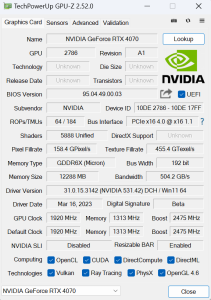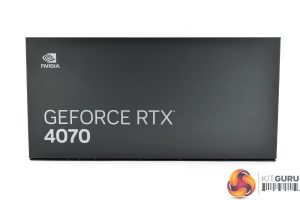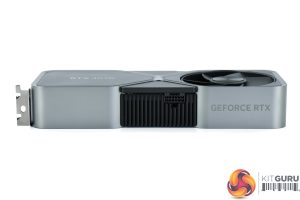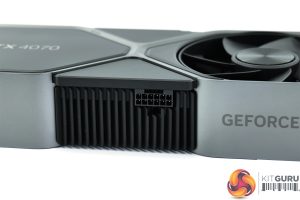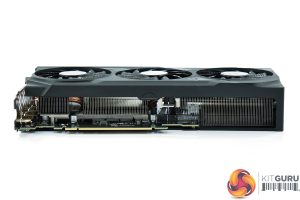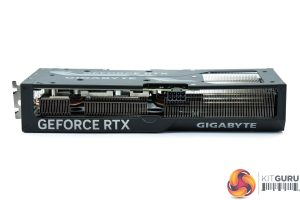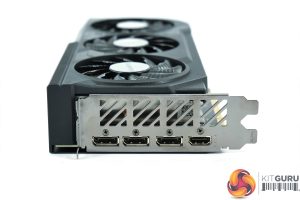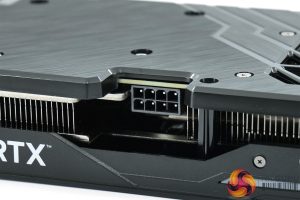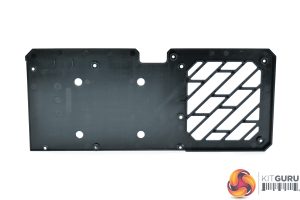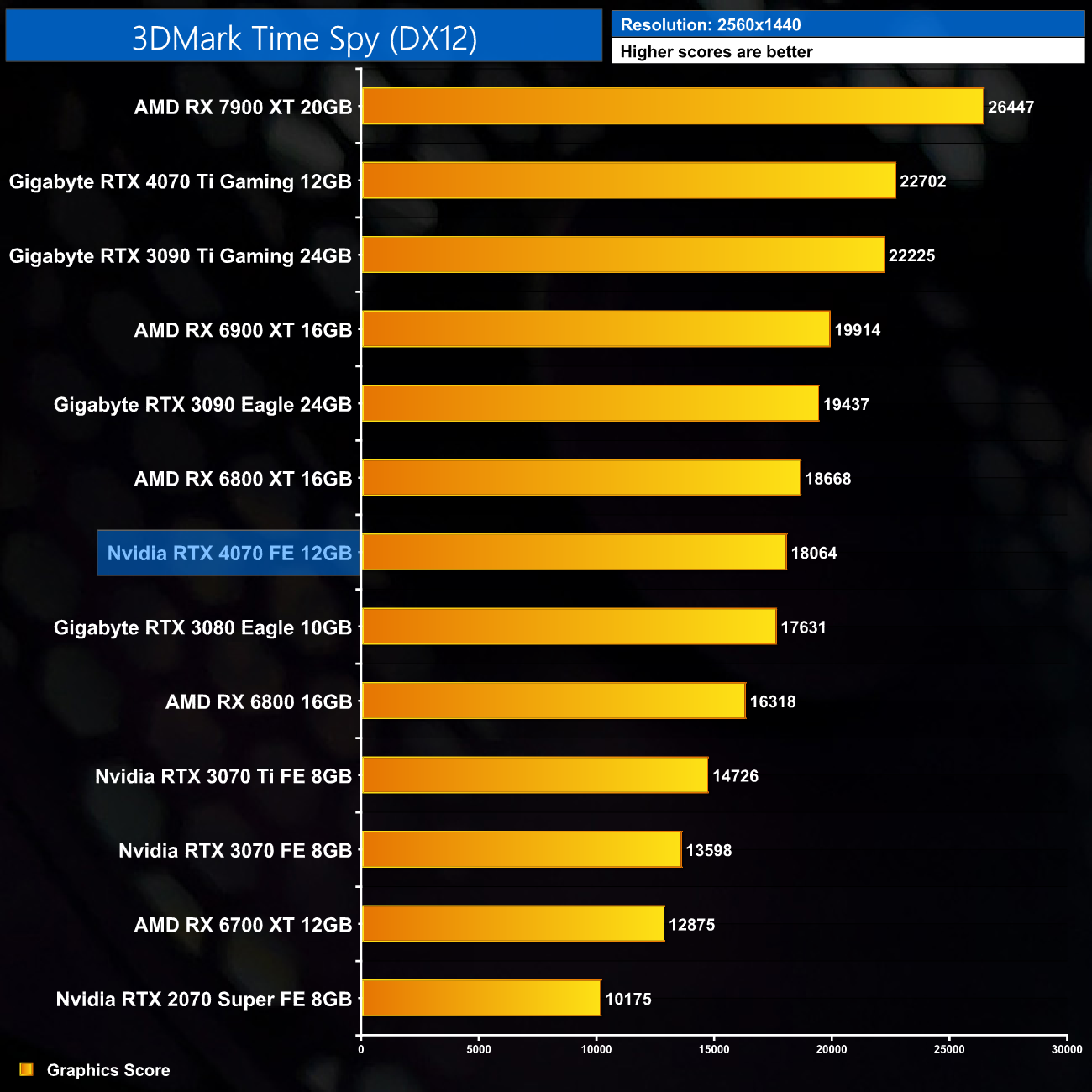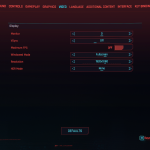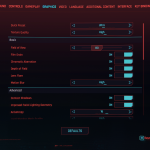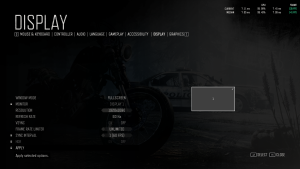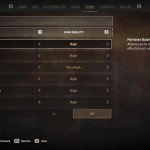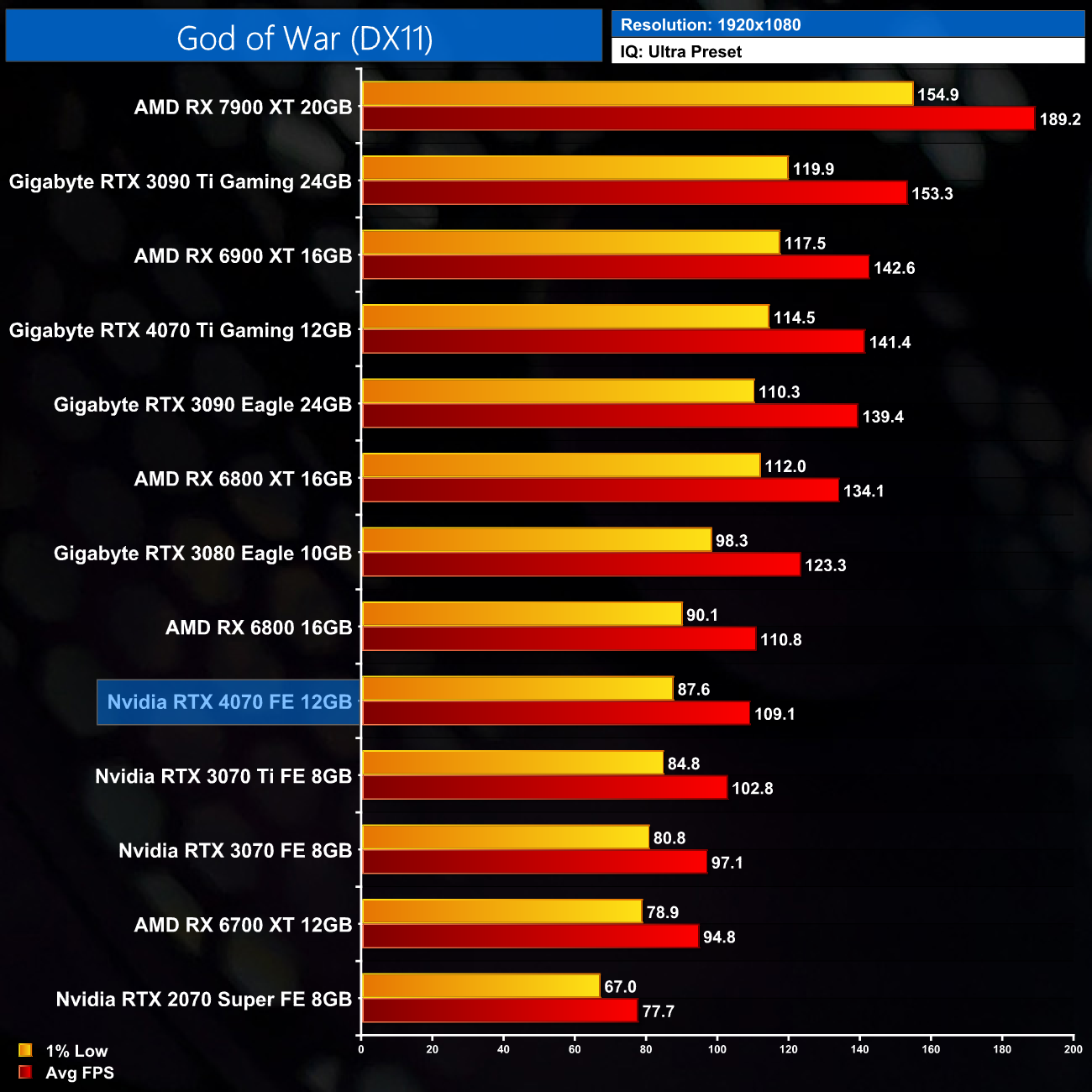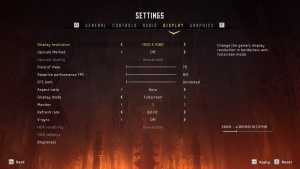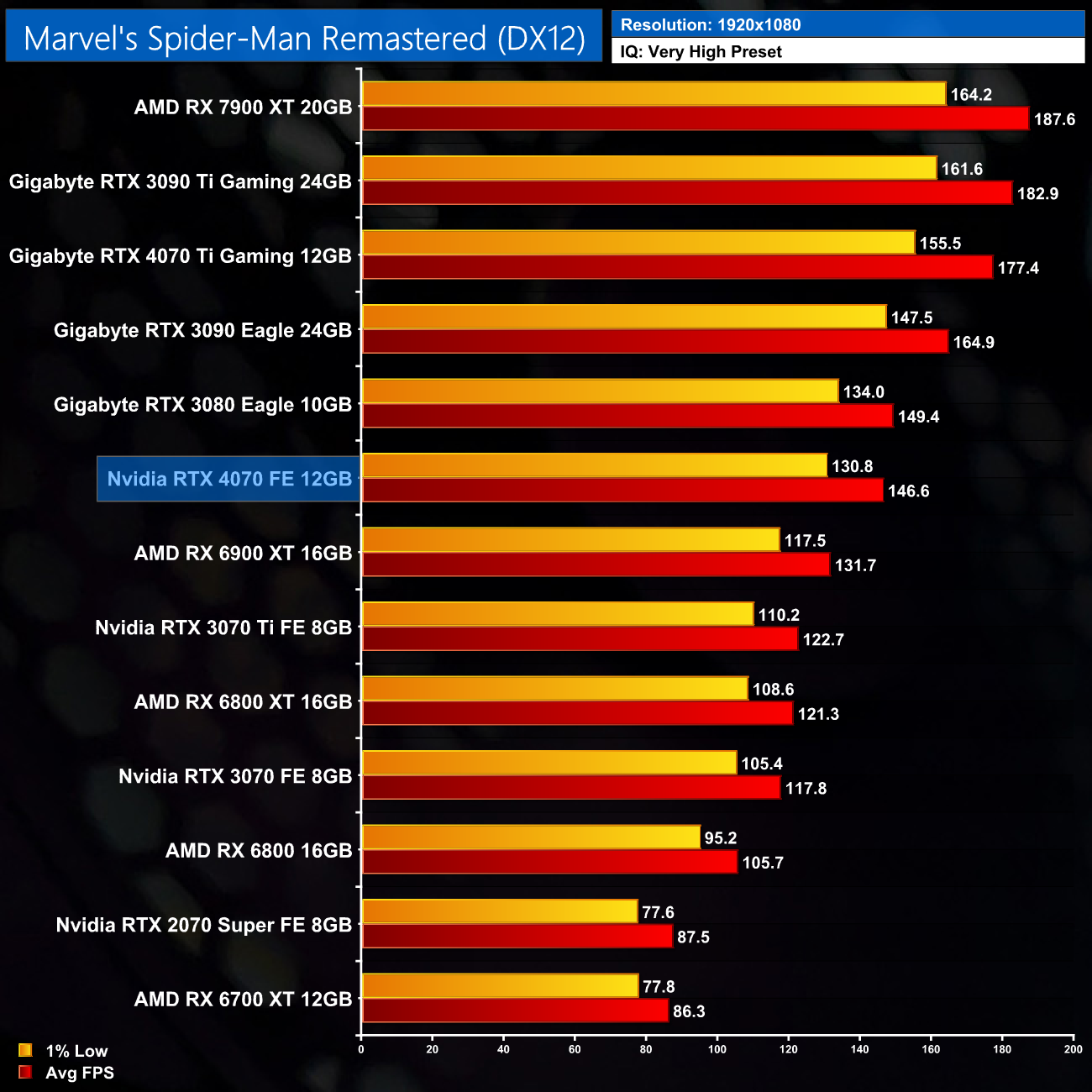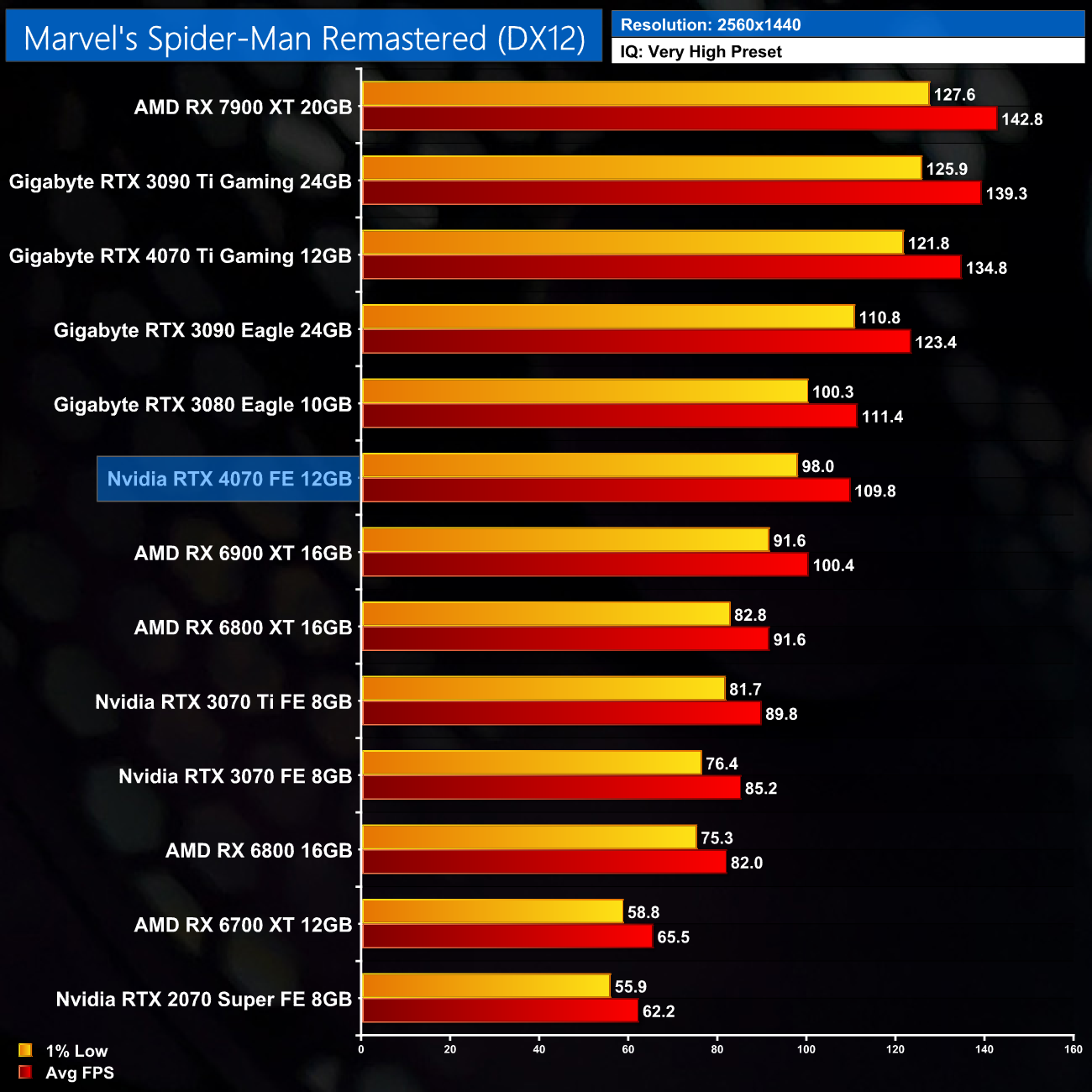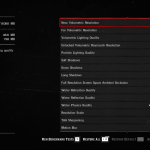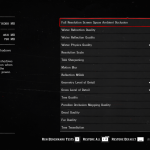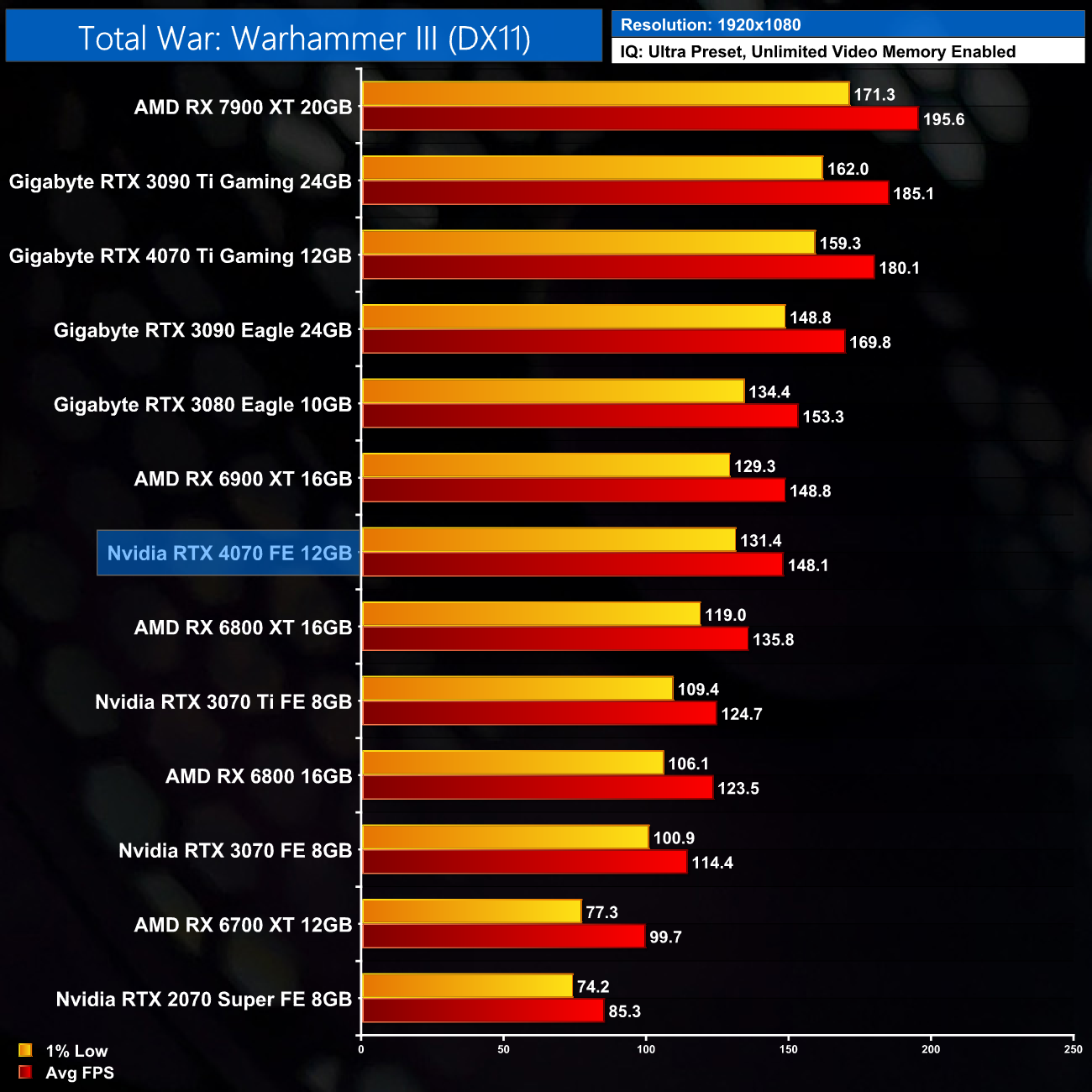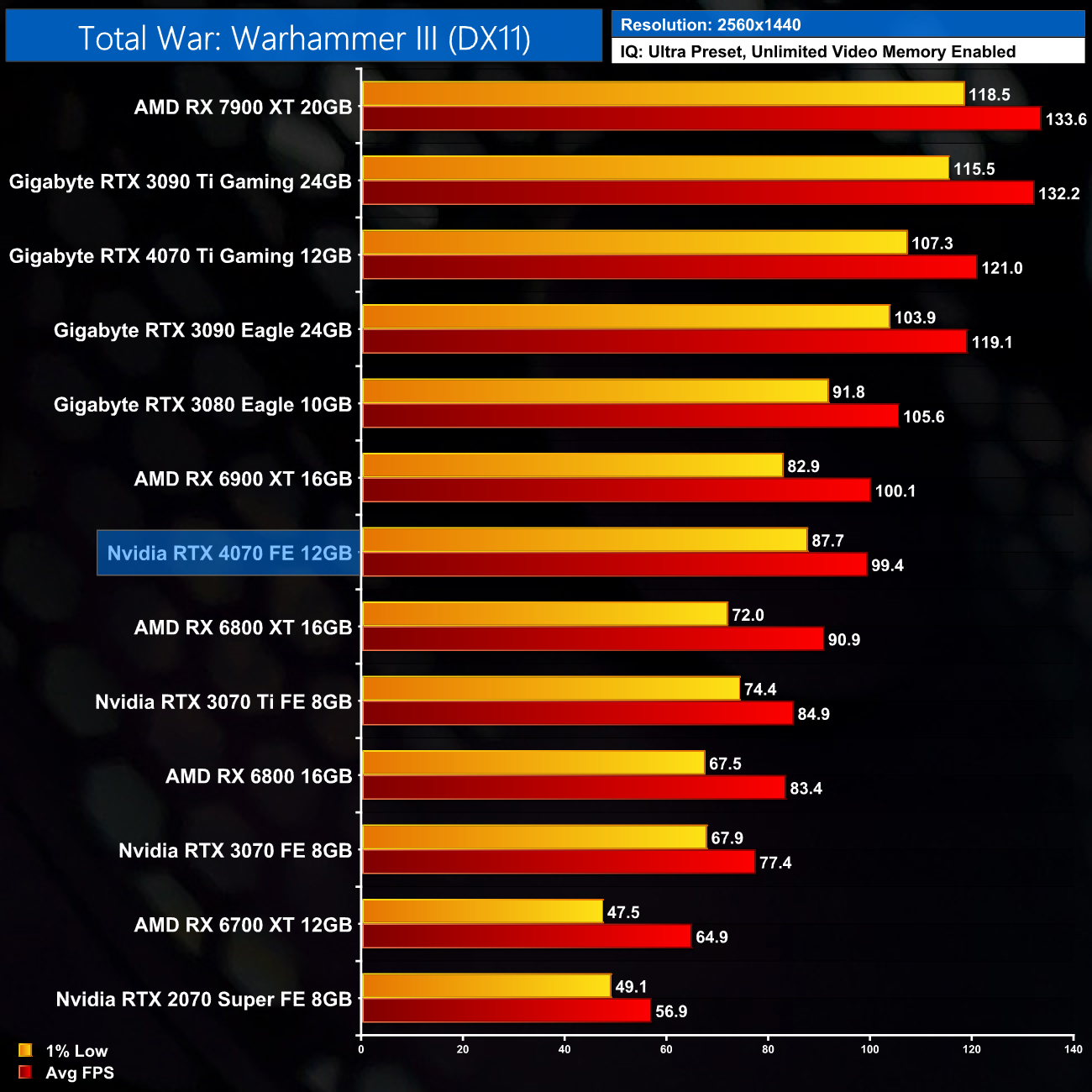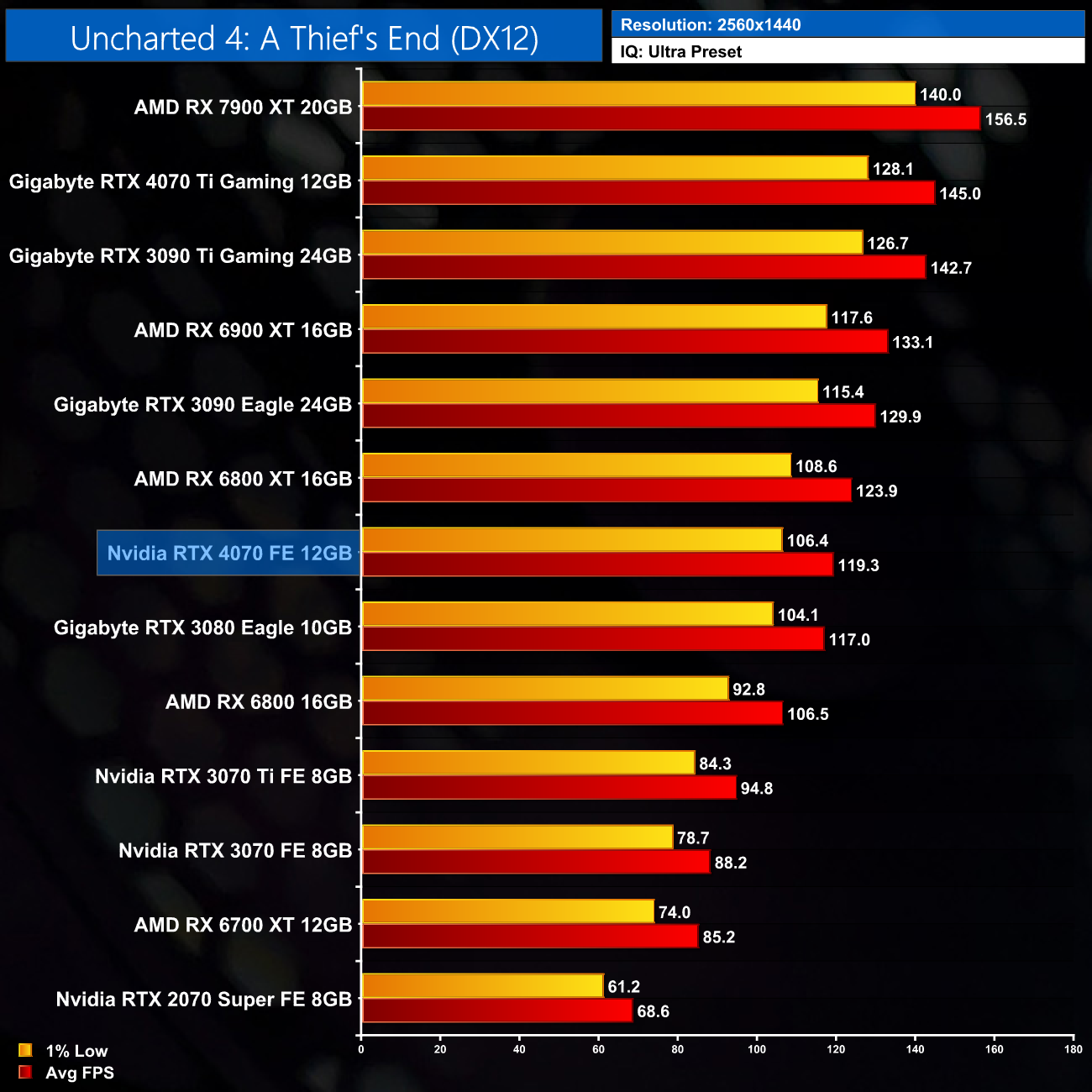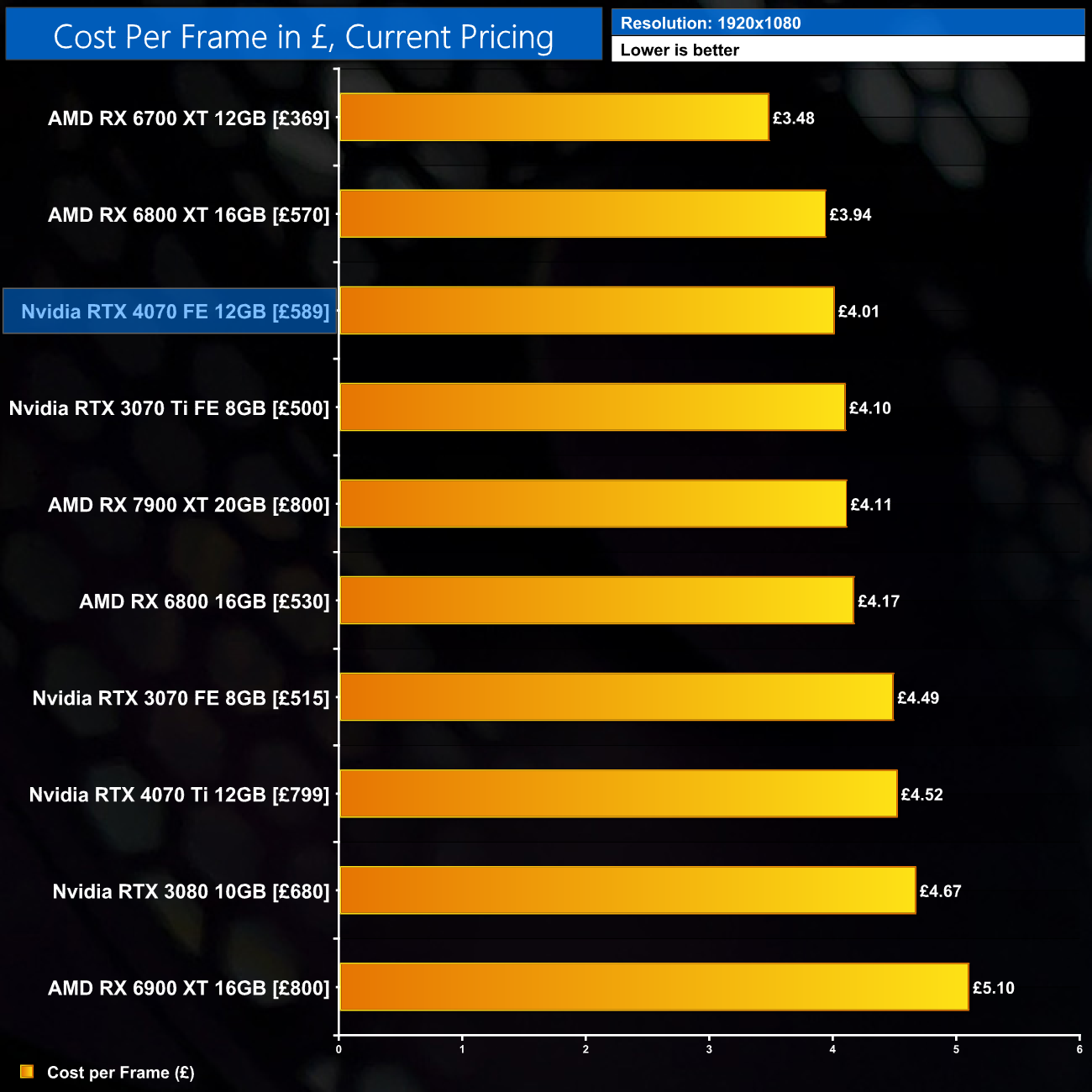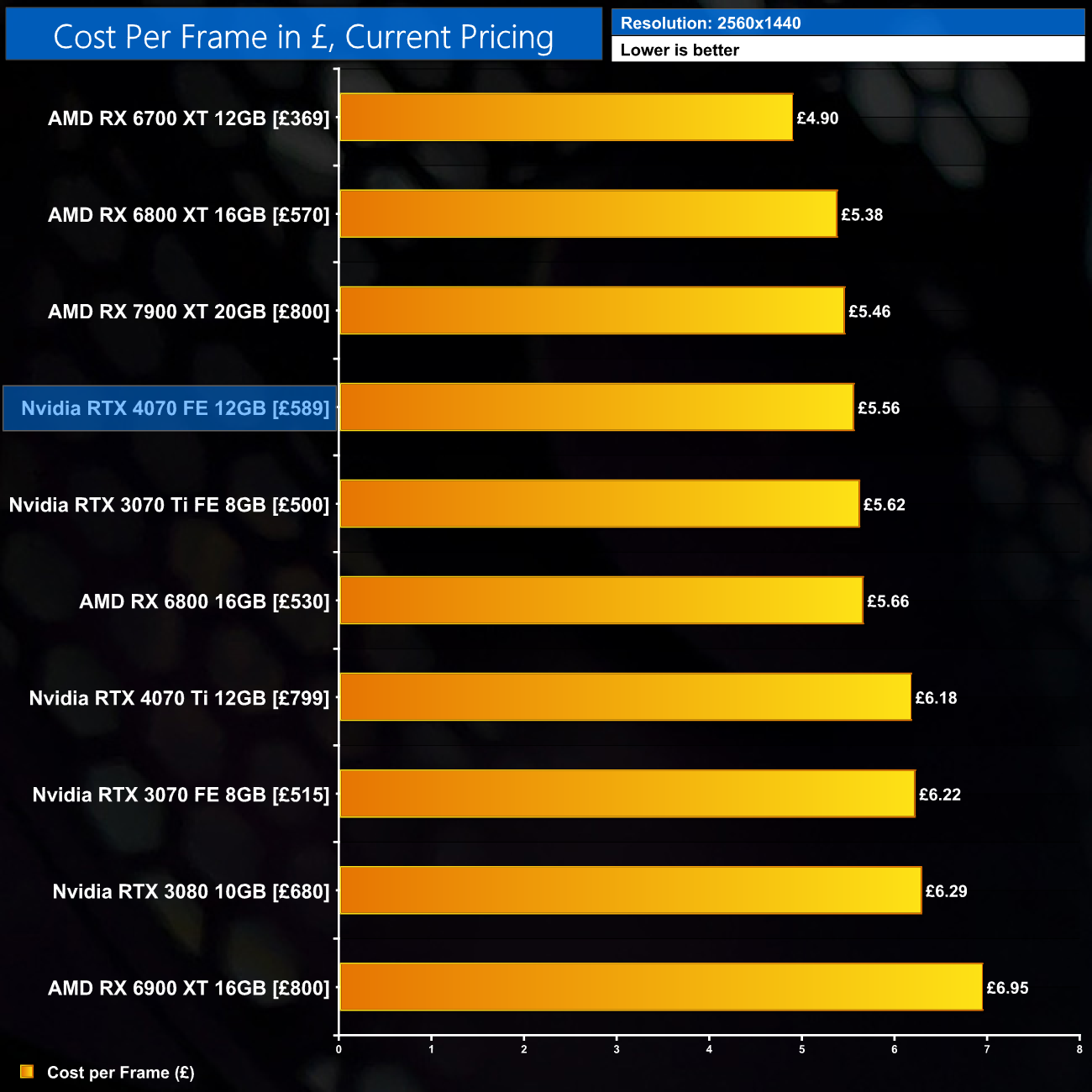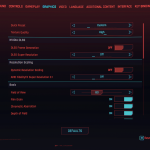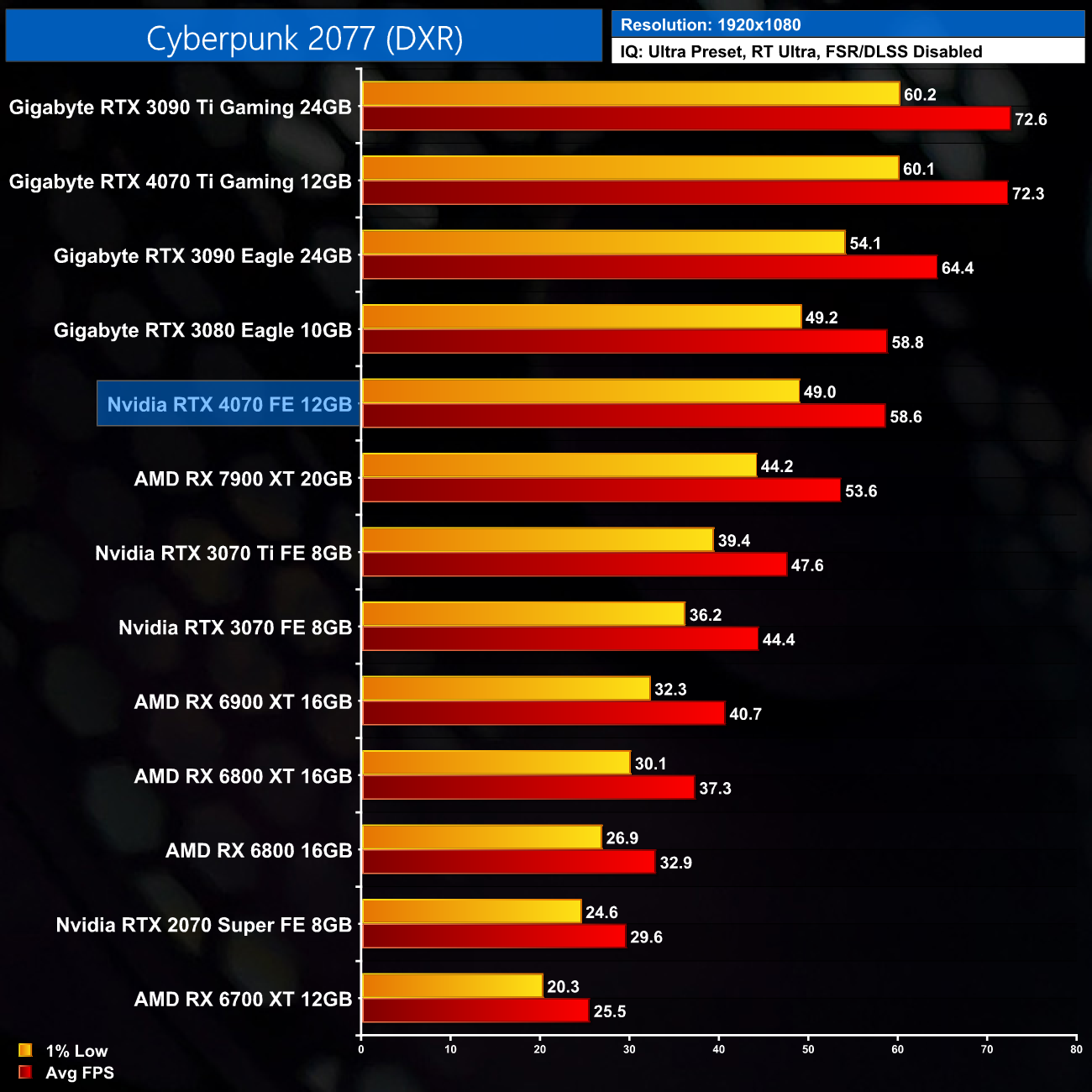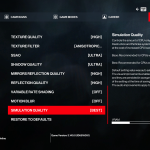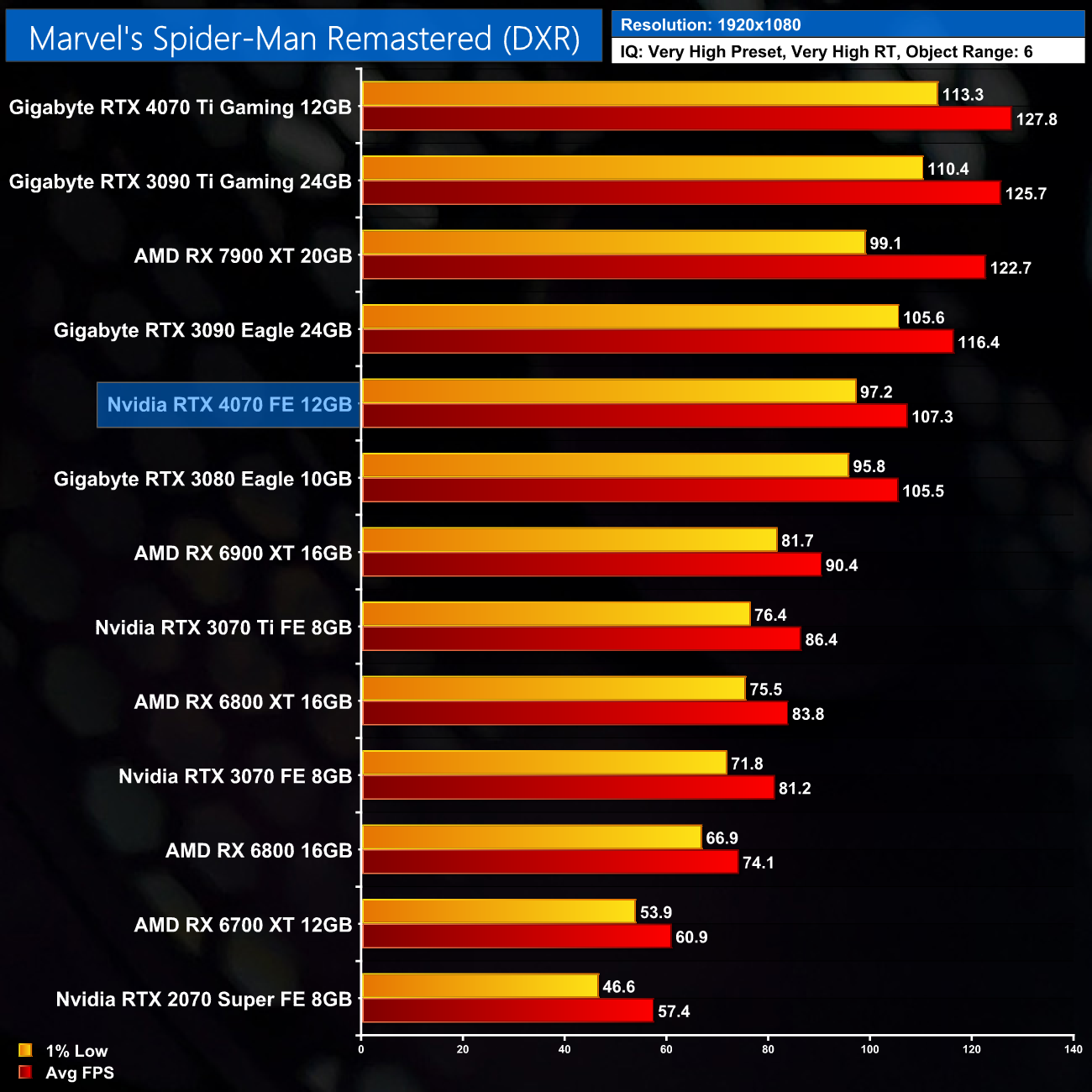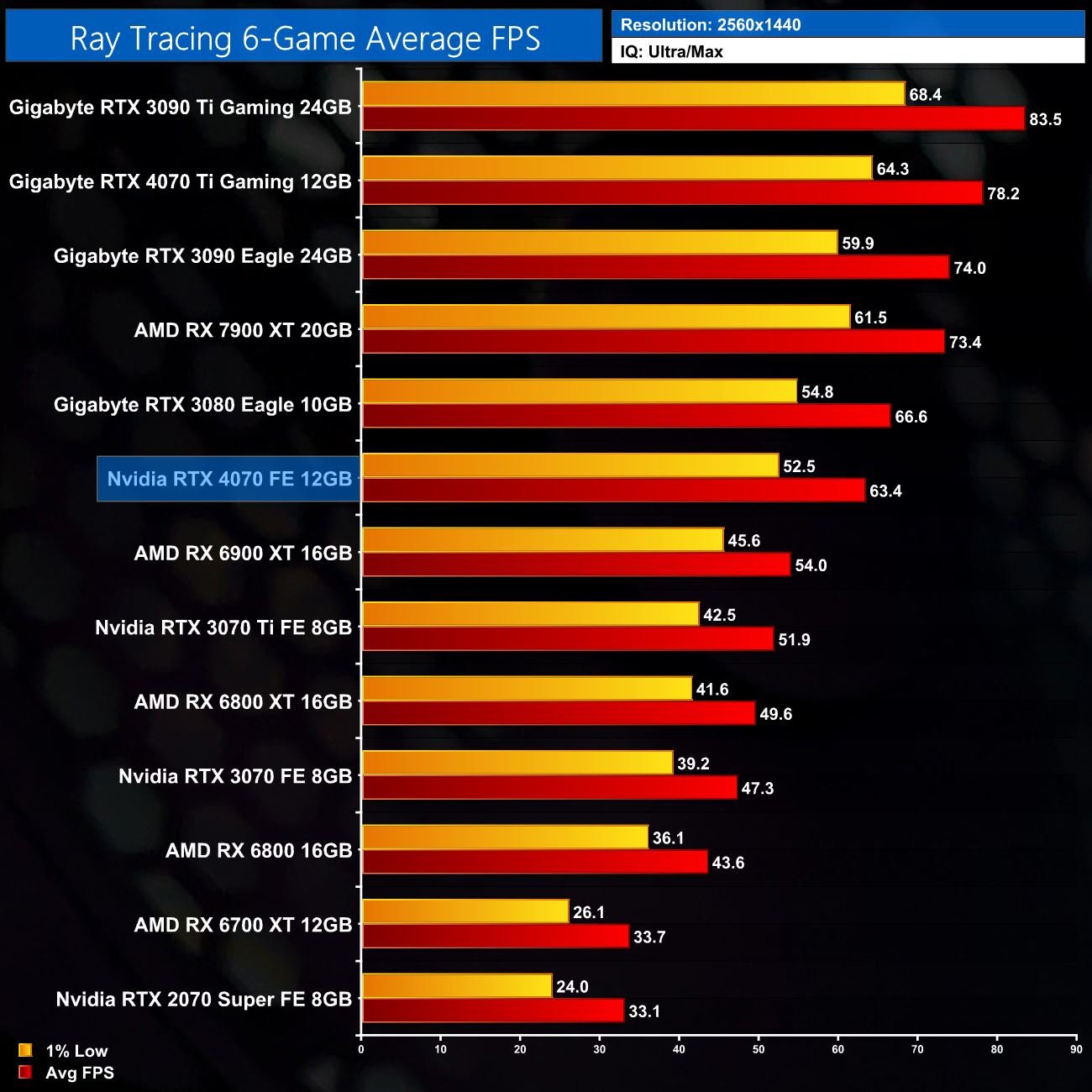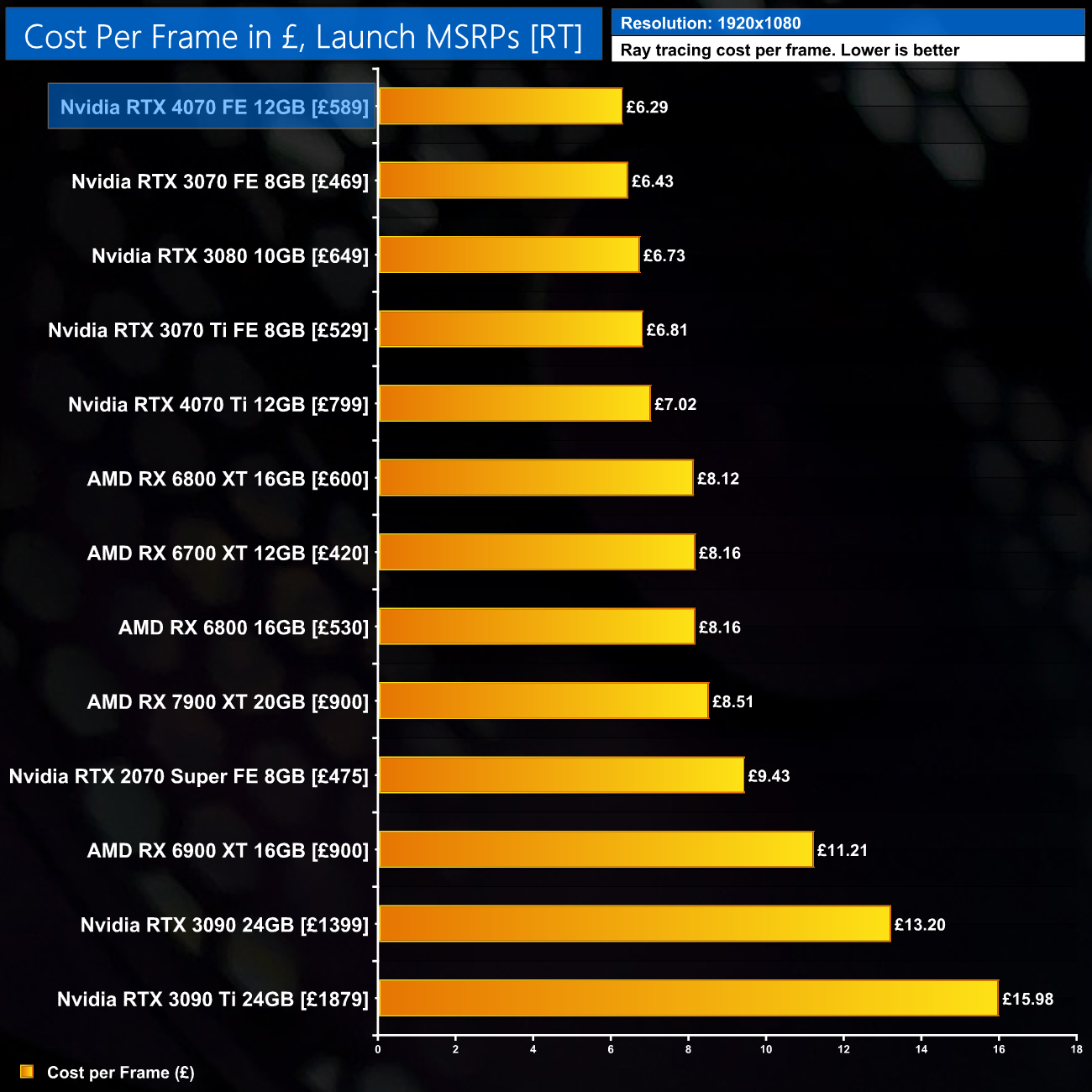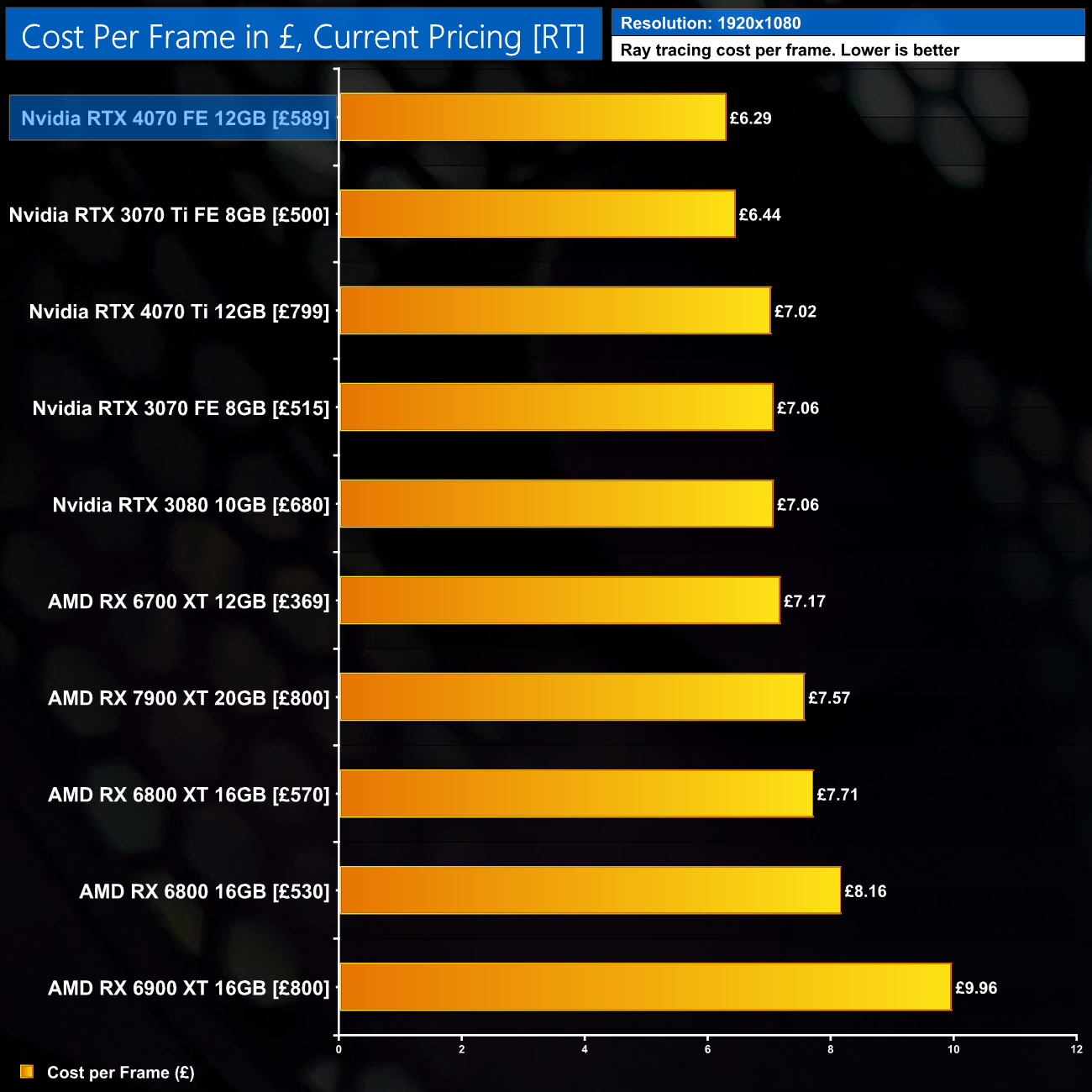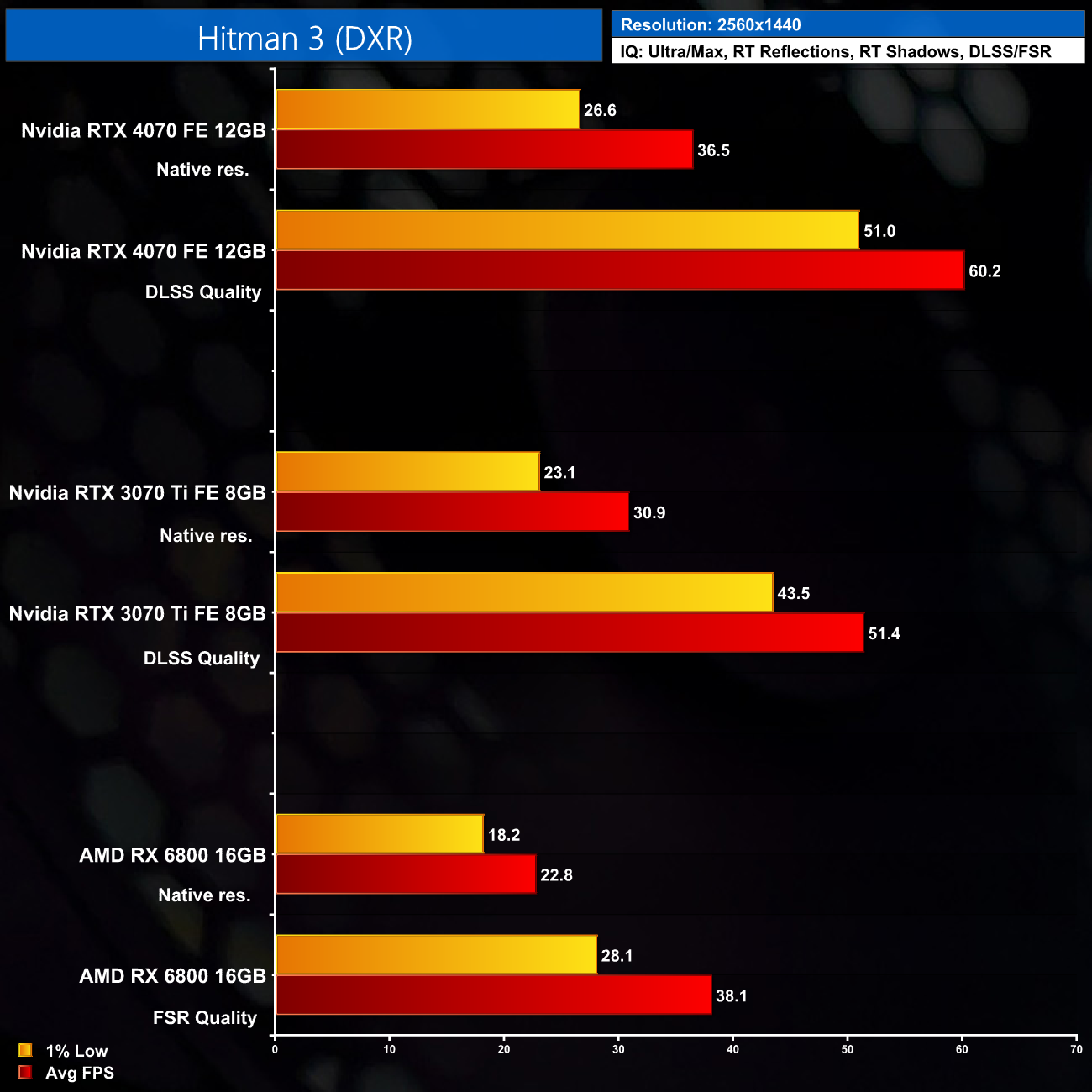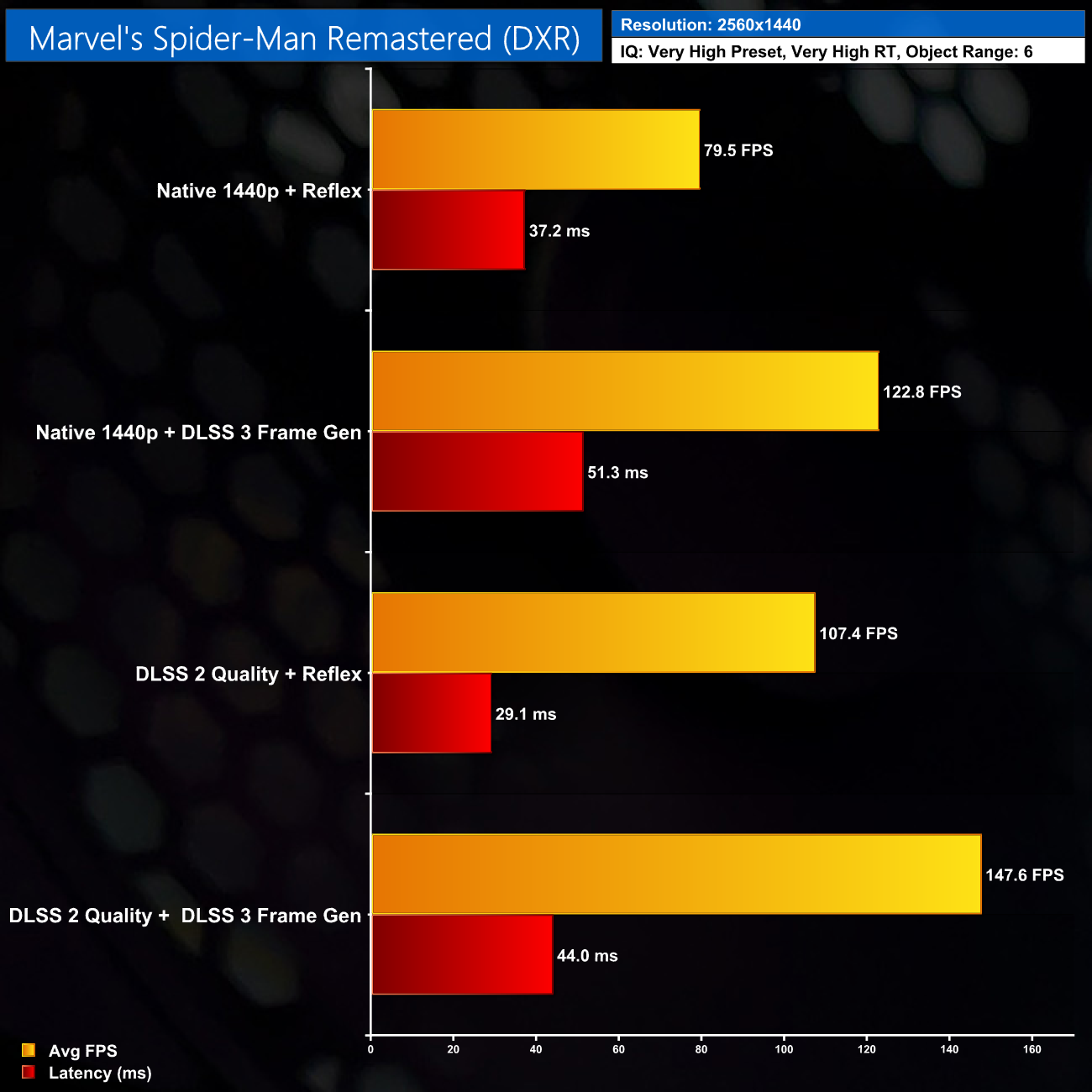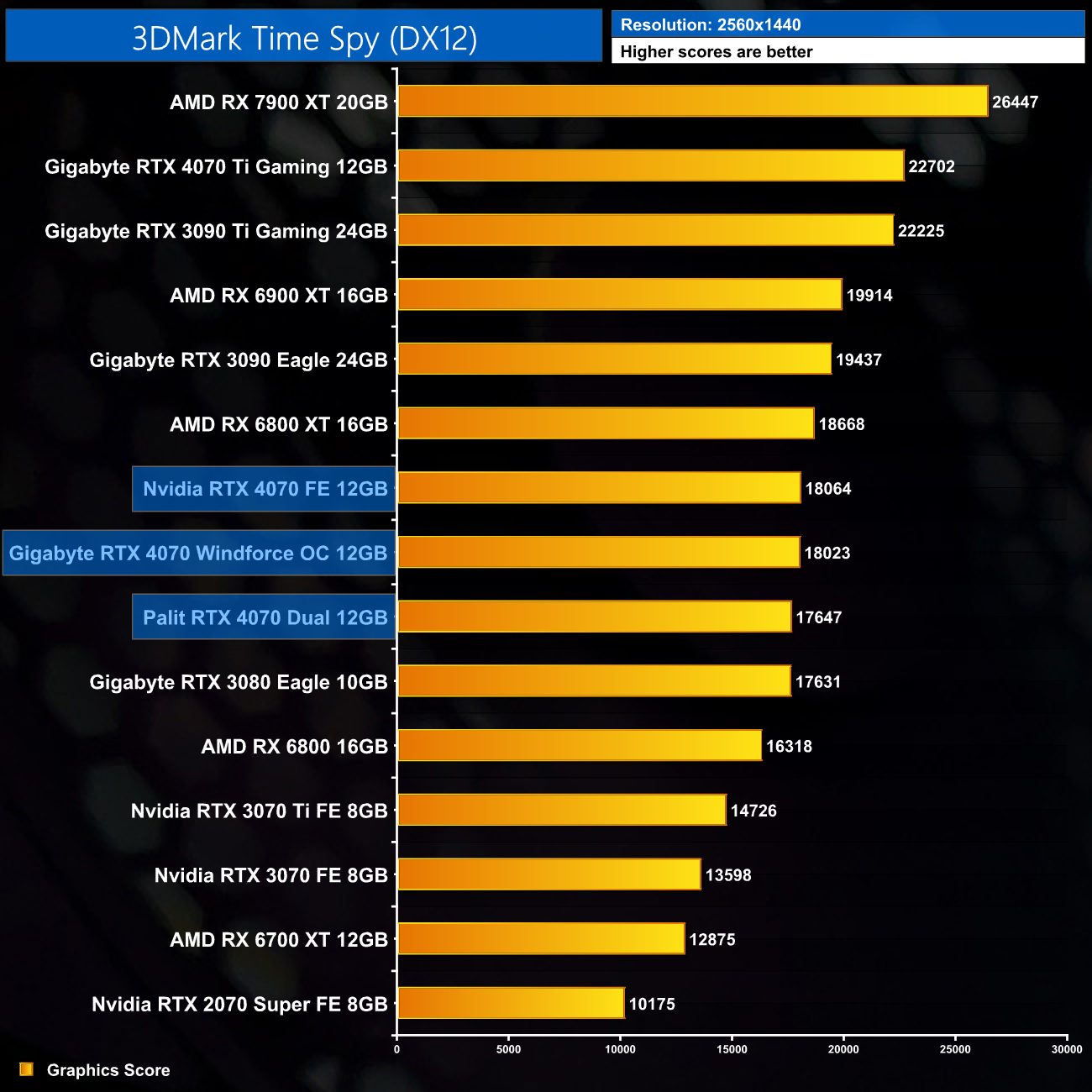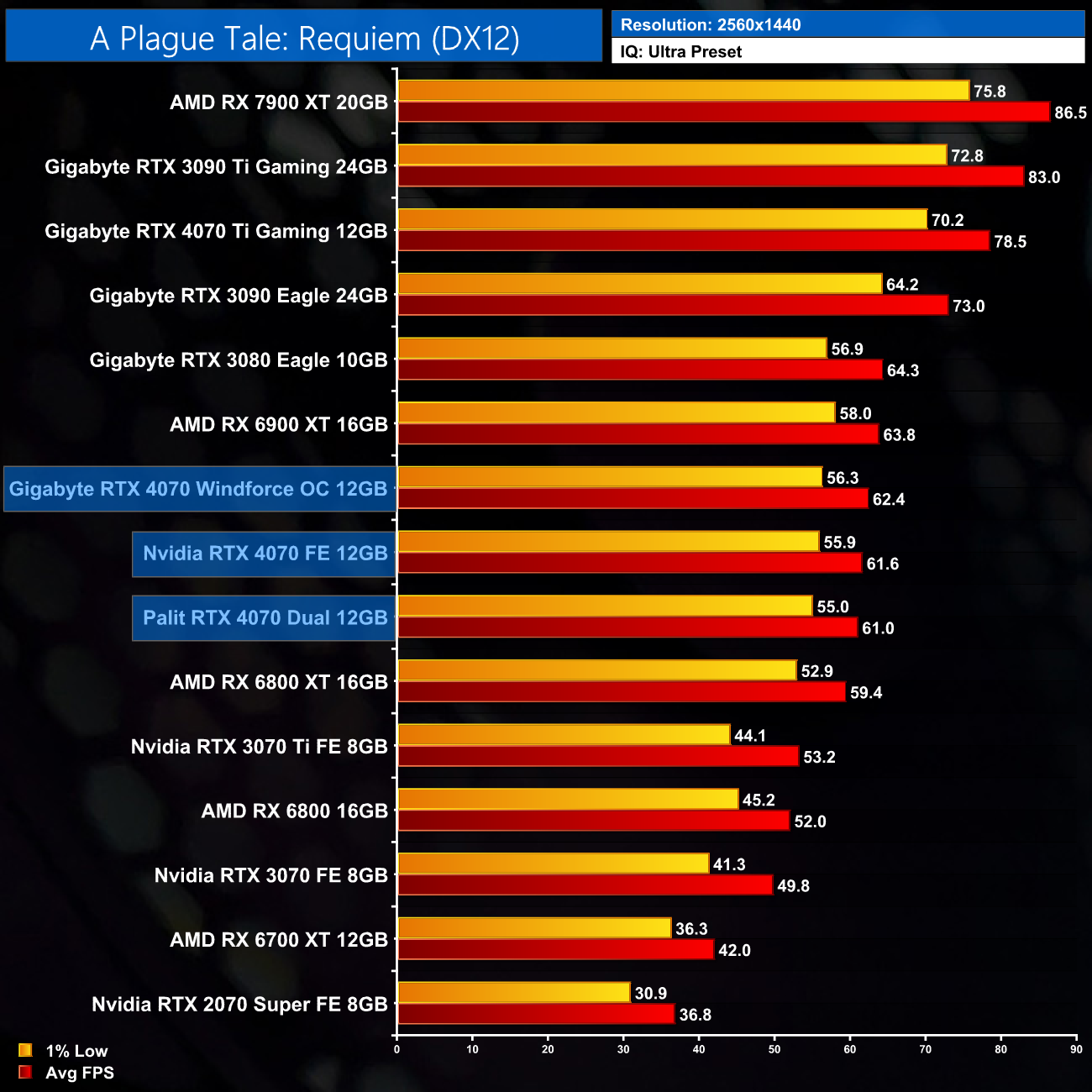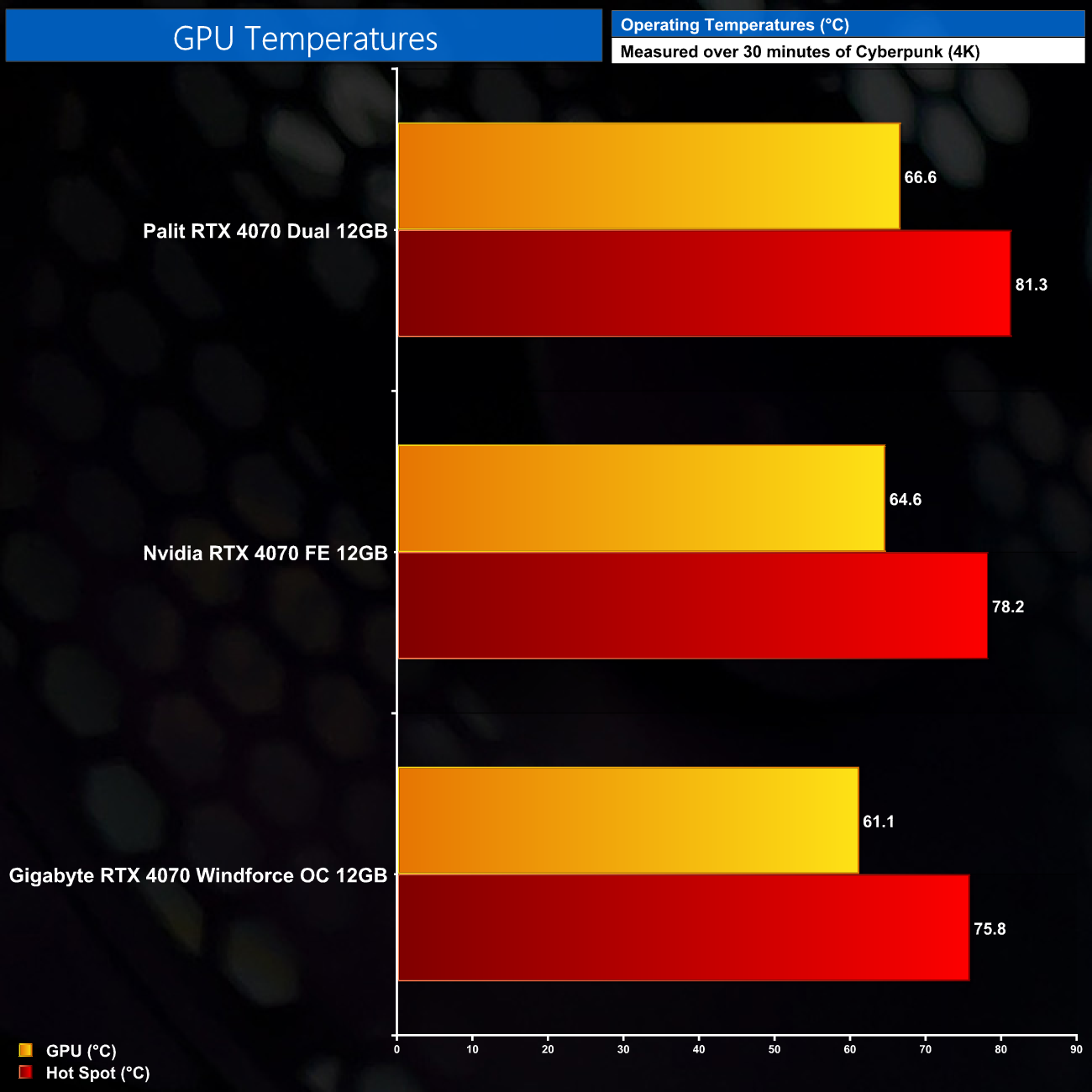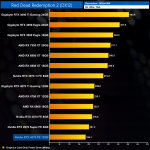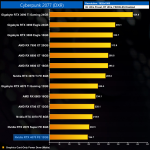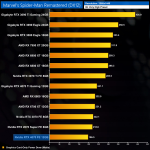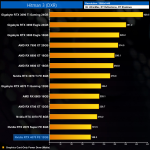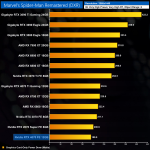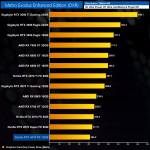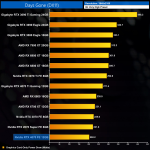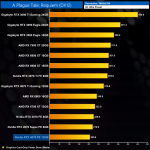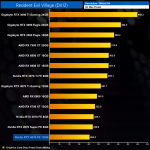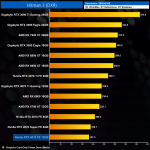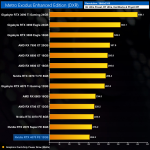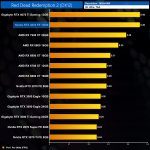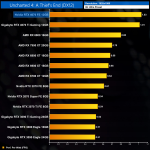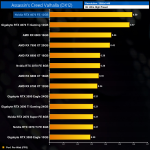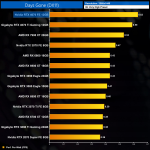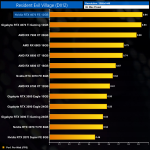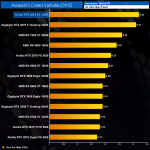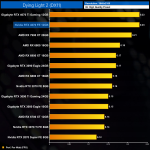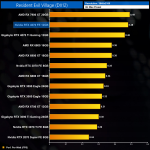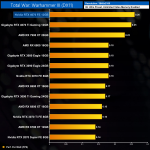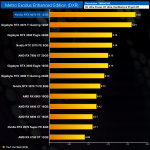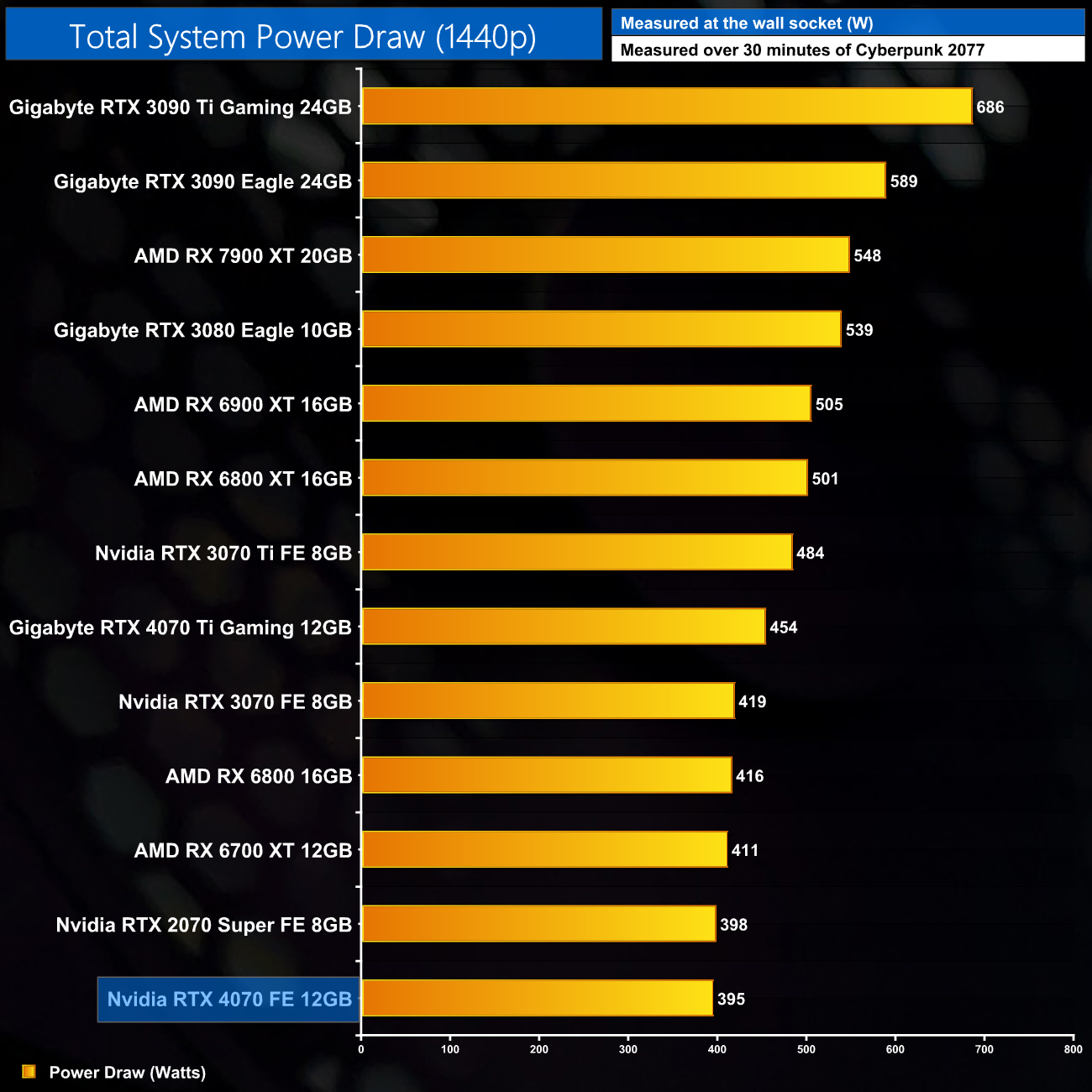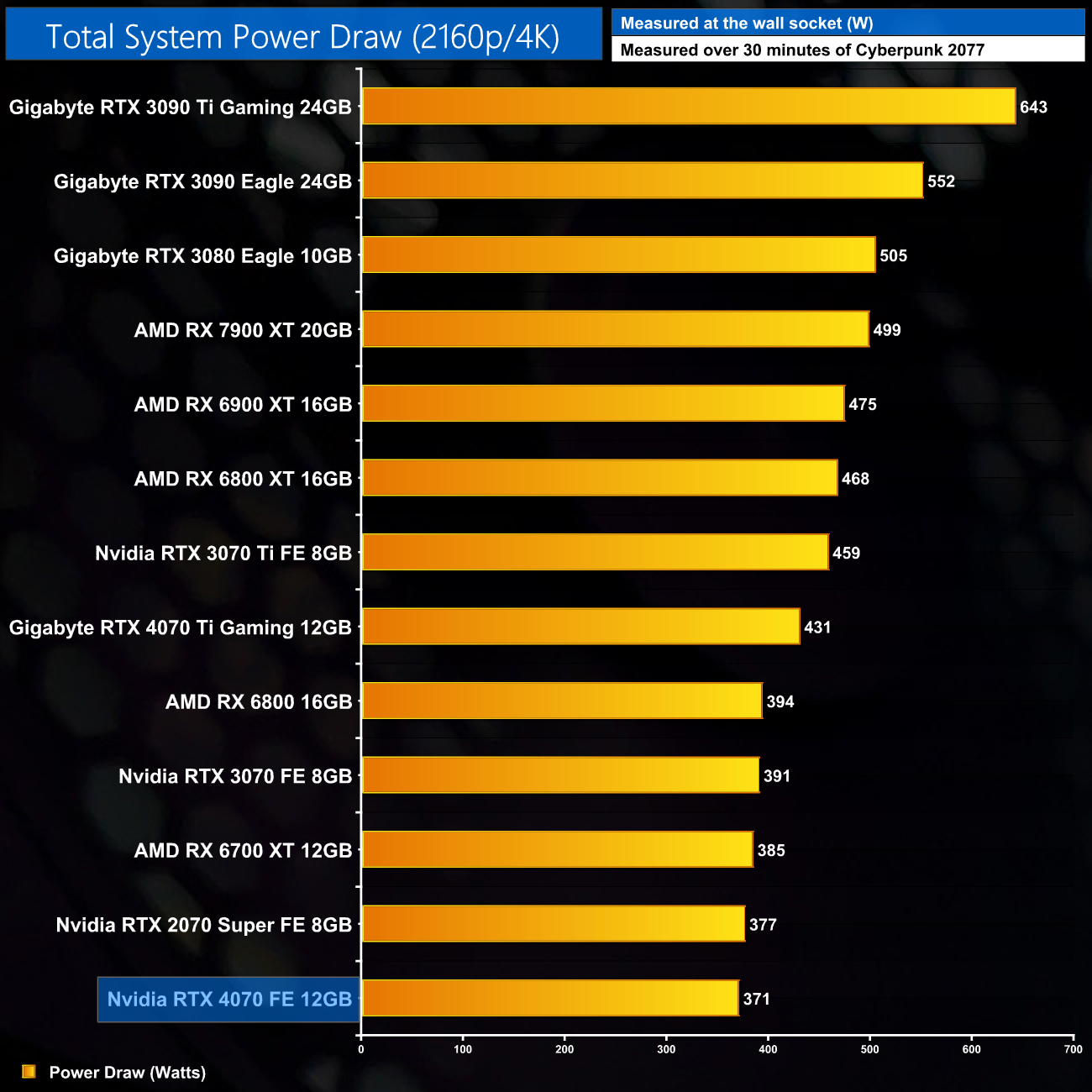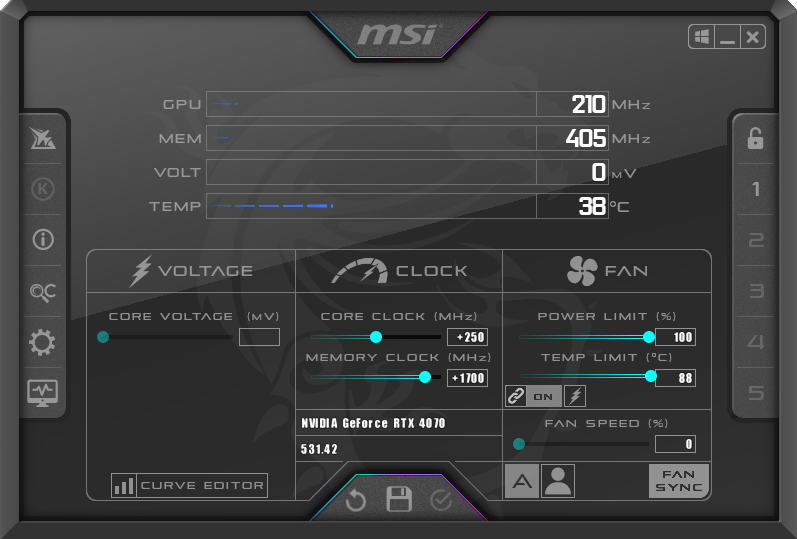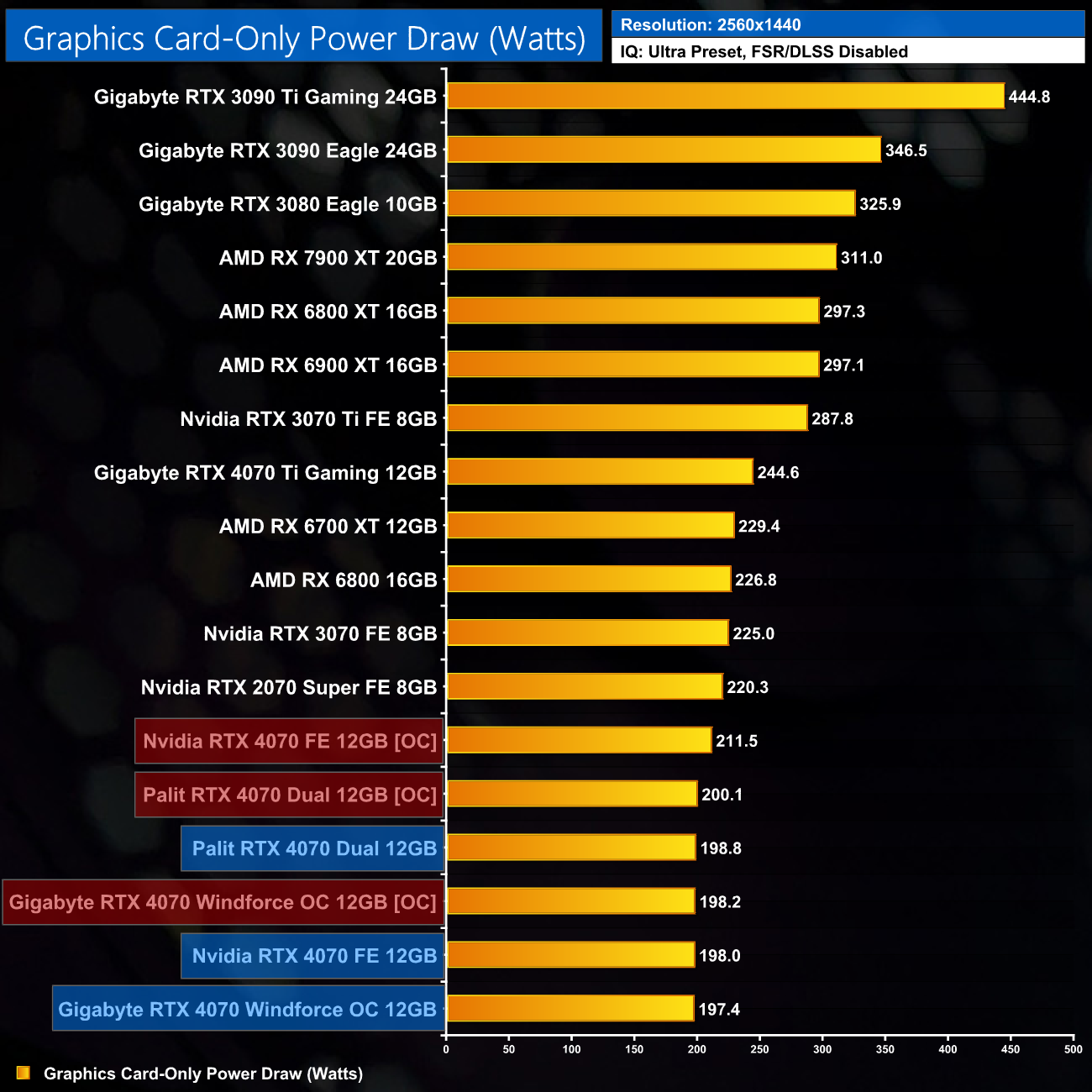
It's been a fairly slow few months in the consumer GPU space, with the RTX 4070 Ti being the last graphics card to hit the market back in January. That changes today however, as Nvidia is now ready to release the RTX 4070 (non-Ti). Offering a cut-down GPU die compared to the RTX 4070 Ti, the 4070 also comes in with a lower price-point of £589. We look at gaming performance, ray tracing, power draw, efficiency and much more in today's review.
The Nvidia RTX 4070 is the fourth Ada Lovelace GPU to hit shelves, with the launch of the 40-series flagship, the RTX 4090, now six months behind us. How time flies! It's essentially a cut-down RTX 4070 Ti, using the same AD104 silicon but with 23% fewer cores, though it shares the same memory subsystem, with 12GB GDDR6X VRAM.
Alongside the Nvidia Founders Edition, today we also take a look at the Gigabyte RTX 4070 Windforce OC, alongside the Palit RTX 4070 Dual. Both are targeting the £589 MSRP, so it'll be interesting to see how they stack up today. If you want to read this review as a single page, click HERE.
| RTX 4090 | RTX 4080 | RTX 4070 Ti | RTX 4070 | RTX 3080 | RTX 3070 Ti | |
| Process | TSMC N4 | TSMC N4 | TSMC N4 | TSMC N4 | Samsung 8N | Samsung 8N |
| SMs | 128 | 76 | 60 | 46 | 68 | 48 |
| CUDA Cores | 16384 | 9728 | 7680 | 5888 | 8704 | 6144 |
| Tensor Cores | 512 | 304 | 240 | 184 | 272 | 192 |
| RT Cores | 128 | 76 | 60 | 46 | 68 | 48 |
| Texture Units | 512 | 304 | 240 | 184 | 272 | 192 |
| ROPs | 176 | 112 | 80 | 64 | 96 | 96 |
| GPU Boost Clock | 2520 MHz | 2505 MHz | 2610 MHz | 2475 MHz | 1710 MHz | 1770 MHz |
| Memory Data Rate | 21 Gbps | 22.4 Gbps | 21 Gbps | 21 Gbps | 19 Gbps | 19 Gbps |
| L2 Cache | 73728 KB | 65536 KB | 49152 KB | 36864 KB | 6144 KB | 4096 KB |
| Total Video Memory | 24GB GDDR6X | 16GB GDDR6X | 12GB GDDR6X | 12GB GDDR6X | 10GB GDDR6X | 8GB GDDR6X |
| Memory Interface | 384-bit | 256-bit | 192-bit | 192-bit | 320-bit | 256-bit |
| Memory Bandwidth | 1008 GB/Sec | 716.8 GB/Sec | 504 GB/Sec | 504 GB/Sec | 760 GB/Sec | 608 GB/Sec |
| TGP | 450W | 320W | 285W | 200W | 320W | 290W |
First, for a quick spec recap. Just like the RTX 4070 Ti, RTX 4070 uses a cut-down AD104 die, measuring 295mm2. The fundamental building blocks are still the same of course, with the RTX 4070 offering a total of 46 Streaming Multiprocessors (SMs), each housing 128 CUDA Cores, for a total of 5888. We also find 46 RT cores, 184 Tensor cores, 184 Texture Units, and 64 ROPs.
TSMC's N4 node has Nvidia cranking up the clock speed significantly this generation, with the RTX 4070 sporting a 2475MHz rated boost clock. That's 135MHz slower than the rated clock speed of the RTX 4070 Ti however, but we would expect GPU Boost to push things further still.
The memory configuration is another area where AD104 has been cut-back significantly. The memory interface has been reduced to 192-bit, and even with 12GB GDDR6X running at 21Gbps, that brings total memory bandwidth down to 504 GB/s, lower than even the RTX 3070 Ti. That said, there has been a substantial upgrade to the L2 cache with the Ada architecture, with the RTX 4070 now offering 36.8MB, compared to just 6MB for GA102.
Considering these cut-backs, power draw is naturally lower than the RTX 4070 Ti, with the 4070 boasting a 200W TGP. This is something we focus on closely, using our updated GPU power testing methodology in this review, so read on for our most detailed power and efficiency testing yet.
The RTX 4070 Founders Edition ships in identical packaging to the RTX 4080 or 4090 Founders. The front of the box opens up to reveal the card sitting in the middle of the cardboard surround.
Inside, we find a few support guides and pieces of documentation, along with a dual 8-pin to 16-pin 12VHPWR adapter.
Looking at the graphics card, the overall design is the same as the 4080 or 4090 Founders Edition – the size has just been scaled down dramatically. That means we still find a premium metal build, with two fans operating in a push-pull configuration. Of course, unlike the 120mm fans on the 4080/4090 FE, these are smaller at 90mm, but they are still ‘counter rotating', so the fan on the underside of the card spins anti-clockwise, while the fan on the top spins clockwise.
In terms of the size however, the 4070 really is so much smaller than the 4080 FE. In fact, the 4070 is smaller than the RTX 3070 Ti – it appears to be the same size as the regular RTX 3070, measuring 242mm x 112mm, with a standard dual-slot thickness. For reference, the RTX 4080 FE measures 304 x 147 x 61mm.
The side of the card is fairly plain, with the grey metal frame on show, along with some aluminium heatsink fins. The GeForce RTX branding is also present here towards the end of the card.
The backplate retains the same x-shaped design we are now very familiar with, with the RTX 4070 branding visible on the left-hand side. The top-side 90mm fan takes up almost the entirety of the right-hand side.
Nvidia continues to use the 12VHPWR connector on its Founders Edition models, though for the first time in the 40-series, AIBs have the option to use a single 8-pin instead if they wish. Display outputs consist of 3x DisplayPort 1.4 and 1x HDMI 2.1.
The Gigabyte RTX 4070 Windforce OC ships in a very familiar-looking box, with a large robotic eye visible on the front along with the GeForce branding. On the back, Gigabyte highlights a number of key features.
Inside, the only included accessory is a quick start guide.
The graphics card itself is a fairly plain design, being almost entirely matte black with not a hint of colour anywhere – and that includes RGB, something which is not present on the Windforce. The shroud is made from plastic, but it feels reasonably sturdy in the hand.
Three 80mm fans sit within the shroud, and of course these feature Gigabyte's Alternate Spinning feature, where the central fan spins in reverse relative to the outer two, which Gigabyte claims should reduce turbulence and increase overall pressure down onto the heatsink itself.
I don't have official dimensions for the Windforce, but it is a touch larger than the Founders Edition while still being much more reasonable than other 40-series cards. My own measurements have it at approximately 262 x 129 x 48mm, so it's just a touch thicker than a standard dual-slot card.
The front side of the card is home to the GeForce RTX and Gigabyte logos printed in white.
As for the backplate, I was pleased to see this is still made from metal despite the Windforce being an MSRP card. It's mostly black, with a couple more logos and some grey accents to add a bit of visual interest.
As mentioned on the previous page, Nvidia is now allowing its partners to ship 4070s with a single 8-pin power connector if they wish – considering the TGP of the GPU is only 200W, this is no problem at all from a power perspective and means users don't need any adapters or new cables. Display outputs consist of 3x DisplayPort 1.4 and 1x HDMI 2.1.
After disassembling the card we get a good look at the PCB. Here Gigabyte has opted for 50A Alpha and Omega AOZ5311NQI MOSFETs across the board, with 7 phases feeding the GPU and 3 phases for the memory. A UPI UP9512R controller is used for the GPU VRM, with a UPI UP9529Q looking after the memory VRM.
Micron 16Gb GDDR6X memory modules are used, model number MT61K512M32KPA-21.
Gigabyte's cooler is relatively basic, but considering the power demands are much lower than other 40-series cards, it should be absolutely fine. Three 6mm copper heatpipes make direct contact with the GPU die. Three memory modules also contact with these heatpipes, while the other three meet with an aluminium baseplate. Separate baseplates are also used to contact the MOSFETs.
Despite using a metal backplate, Gigabyte has opted not to add thermal pads on the underside, something which can help memory thermals, albeit not very significantly.
Palit's RTX 4070 Dual ships in a black box, with some blue accents on the front – you can also make out the two fans, hence the name ‘Dual'. On the back, Palit highlights some key information in multi-lingual text.
Interestingly, there were no included quick-start guides or any accessories in the box, possibly due to my sample being a pre-release review unit, but a quick-start guide for a new user wouldn't have gone amiss.
Looking at the card itself, Palit has also opted for a minimalist design, with an all-black plastic shroud. The build quality isn't going to blow you away as there's a bit of flex to the plastic used, but it's not the end of the world – once installed, how often are you going to touch the card anyway?
As we mentioned, the name ‘Dual' refers to the dual fan layout, with Palit opting for two 100mm fans here.
In terms of the size of the card, we again don't have official dimensions at the time of publishing, but I measured the card at approximately 267 x 130 x 40mm, so it's a standard dual-slot thickness.
The front side of the card is home to the GeForce RTX and Palit logos. The small grey strip underneath the Palit logo is actually an RGB strip – it's very basic, with just three effects to choose from within Palit's Thundermaster software, but I suppose it's better than nothing.
As for the backplate, I am a bit disappointed Palit has opted for a plastic backplate here, it definitely adds to the less-than-premium feel that was started with the plastic shroud. I get this is a ‘MSRP' card, but it's still nearly £600 – Gigabyte managed it, I would have expected the same from Palit.
As mentioned on the previous page, Nvidia is now allowing its partners to ship 4070s with a single 8-pin power connector if they wish – considering the TGP of the GPU is only 200W, this is no problem at all from a power perspective and means users don't need any adapters or new cables. Display outputs consist of 3x DisplayPort 1.4 and 1x HDMI 2.1.
Disassembling the card to look at the PCB, Palit has opted for a less beefy 6+2 VRM, so one fewer GPU phase than Gigabyte. Palit is using OnSemi's NCP302150 MOSFETs, rated at 50A. As per the Gigabyte Windforce, a UPI UP9512R controller is used for the GPU VRM, with a UPI UP9529Q looking after the memory VRM.
As for the cooler, Palit has opted for four 6mm heatpipes, with the GPU and VRAM contacting a unified baseplate. A separate fin array is used to contact the VRM MOSFETs.
Palit is using a plastic backplate, purely for aesthetic reasons – it will not help dissipate heat from the back of the PCB.
Driver Notes
- All AMD GPUs were benchmarked with the Adrenalin 23.3.2 driver.
- All Nvidia GPUs (except RTX 4070) were benchmarked with the 531.41 driver.
- RTX 4070 was benchmarked with the 531.42 driver supplied to press.
Test System:
We test using a custom built system from PCSpecialist, based on Intel’s Raptor Lake platform. You can read more about this system HERE and configure your own PCSpecialist system HERE.
| CPU |
Intel Core i9-13900KS
|
| Motherboard |
Gigabyte Z790 Gaming X AX
|
| Memory |
32GB (2x16GB) Corsair Dominator Platinum RGB DDR5 6000MHz
|
| Graphics Card |
Varies
|
| SSD |
4TB Seagate Firecuda 530 Gen 4 PCIe NVMe
|
| Chassis | Corsair 5000D Airflow Tempered Glass Gaming Case |
| CPU Cooler |
Corsair iCUE H150i Elite RGB High Performance CPU Cooler
|
| Power Supply |
Corsair 1600W Pro Series Titanium AX1600i Digital Modular PSU
|
| Operating System |
Windows 11 22H2
|
| Monitor |
MSI Optix MPG321UR-QD
|
| Resizable BAR |
Enabled for all supported GPUs
|
Comparison Graphics Cards List
- AMD RX 7900 XT 20GB
- AMD RX 6900 XT 16GB
- AMD RX 6800 XT 16GB
- AMD RX 6800 16GB
- AMD RX 6700 XT 12GB
- Gigabyte RTX 4070 Ti Gaming 12GB
- Gigabyte RTX 3090 Ti Gaming 24GB
- Gigabyte RTX 3090 Eagle 24GB
- Gigabyte RTX 3080 Eagle 10GB
- Nvidia RTX 3070 Ti FE 8GB
- Nvidia RTX 3070 FE 8GB
- Nvidia RTX 2070 Super FE 8GB
All cards were tested at reference specifications.
Software and Games List
- 3DMark Fire Strike & Fire Strike Ultra (DX11 Synthetic)
- 3DMark Time Spy (DX12 Synthetic)
- 3DMark DirectX Raytracing feature test (DXR Synthetic)
- Assassin's Creed Valhalla (DX12)
- Control (DXR)
- Cyberpunk 2077 (DX12)
- Days Gone (DX11)
- Dying Light 2 (DX11)
- F1 22 (DXR)
- God of War (DX11)
- Hitman 3 (DXR)
- Horizon Zero Dawn (DX12)
- Marvel's Spider-Man Remastered (DX12)
- Metro Exodus Enhanced Edition (DXR)
- A Plague Tale: Requiem (DX12)
- Red Dead Redemption 2 (DX12)
- Resident Evil Village (DX12)
- Total War: Warhammer III (DX11)
- Uncharted 4: A Thief's End (DX12)
We run each benchmark/game three times, and present mean averages in our graphs. We use FrameView to measure average frame rates as well as 1% low values across our three runs.
Fire Strike is a showcase DirectX 11 benchmark for modern gaming PCs. Its ambitious real-time graphics are rendered with detail and complexity far beyond other DirectX 11 benchmarks and games. Fire Strike includes two graphics tests, a physics test and a combined test that stresses the CPU and GPU. (UL).
3DMark Time Spy is a DirectX 12 benchmark test for Windows 10 gaming PCs. Time Spy is one of the first DirectX 12 apps to be built the right way from the ground up to fully realize the performance gains that the new API offers. With its pure DirectX 12 engine, which supports new API features like asynchronous compute, explicit multi-adapter, and multi-threading, Time Spy is the ideal test for benchmarking the latest graphics cards. (UL).
Our first look at performance comes from 3DMark, where we can see very similar scores to the RTX 3080. The RTX 4070 is 15% slower than the 4070 Ti in Fire Strike, but 20% slower in Time Spy.
Real-time ray tracing is incredibly demanding. The latest graphics cards have dedicated hardware that’s optimized for ray-tracing. The 3DMark DirectX Raytracing feature test measures the performance of this dedicated hardware. Instead of using traditional rendering techniques, the whole scene is ray-traced and drawn in one pass. The result of the test depends entirely on ray-tracing performance. (UL).
As a test of pure tracing performance, the 3DMark DXR feature test shows the 4070 to be 8% faster than the RTX 3080 and 7% slower than the RTX 3090. It's 19% faster than AMD's RX 7900 XT.
Assassin's Creed Valhalla is an action role-playing video game developed by Ubisoft Montreal and published by Ubisoft. It is the twelfth major instalment and the twenty-second release in the Assassin's Creed series, and a successor to the 2018's Assassin's Creed Odyssey. The game was released on November 10, 2020, for Microsoft Windows, PlayStation 4, Xbox One, Xbox Series X and Series S, and Stadia, while the PlayStation 5 version was released on November 12. (Wikipedia).
Engine: AnvilNext 2.0. We test using the Ultra High preset, DX12 API.
Starting our game benchmarks with Assassin's Creed Valhalla, at 1440p the RTX 4070 delivers about 100FPS on average, making it 22% faster than the RTX 3070 Ti and about 6% ahead of the RTX 3080, while it's not far off the RTX 3090 either.
Increasing the resolution to 4K sees the 4070's relative performance slip back a touch, where it is now dead level with the RTX 3080, and 16% faster than the RTX 3070 Ti. Versus AMD, it's closest challenger is the RX 6800 XT, with the 4070 coming in just a couple of frames ahead.
Cyberpunk 2077 is a 2020 action role-playing video game developed and published by CD Projekt. The story takes place in Night City, an open world set in the Cyberpunk universe. Players assume the first-person perspective of a customisable mercenary known as V, who can acquire skills in hacking and machinery with options for melee and ranged combat. Cyberpunk 2077 was released for Microsoft Windows, PlayStation 4, Stadia, and Xbox One on 10 December 2020. (Wikipedia).
Engine: REDengine 4. We test using the Ultra preset, FSR disabled, DX12 API.
As for Cyberpunk 2077, at 1440p we see the RTX 4070 averaging just under 73FPS, making it just 12% faster than the RTX 3070 Ti. It's also about 7% slower than the RTX 3080, and not much faster than the RX 6800. In fact, it's 8% slower than the 6800 XT, a GPU that released for £599 about two and half years ago.
As we expected coming into this review, performance does fall off at 4K due to the 4070's limited memory bandwidth. It's now 13% slower than the RTX 3080, when it was 7% slower at 1440p, while it's just 10% faster than the RTX 4070. Frame rates aren't wonderful in Cyberpunk at 4K so you'd likely play at 1440p anyway, but this is a trend we will see throughout our testing today.
Days Gone is a 2019 action-adventure survival horror video game developed by Bend Studio and published by Sony Interactive Entertainment for the PlayStation 4 and Microsoft Windows. As part of Sony's efforts to bring more of its first-party content to Microsoft Windows following Horizon Zero Dawn, Days Gone released on Windows on May 18, 2021. (Wikipedia).
Engine: Unreal Engine 4. We test using the Very High preset, DX11 API.
Days Gone is an Unreal Engine 4 title and this typically favours Nvidia, with the RTX 4070 dead level with the RX 6900 XT at 1440p. Things are very close between the 4070 and the 3080 as well, while we're looking at a 14% uplift over the RTX 3070 Ti.
At 4K, the 4070 just slips behind the 6900 XT, but not by much at all and it's still 6% faster versus the 6800 XT. It is, however, now 9% slower than the RTX 3080, and just 9% ahead of the 3070 Ti.
Dying Light 2: Stay Human is a 2022 action role-playing game developed and published by Techland. The sequel to Dying Light (2015), the game was released on February 4, 2022 for Microsoft Windows, PlayStation 4, PlayStation 5, Xbox One, and Xbox Series X/S. (Wikipedia).
Engine: C-Engine. We test using the High preset, DX11 API.
In Dying Light 2, we see the 4070 delivers 93FPS on average at 1440p, grouping it closely with the RX 6800 XT and RTX 3080, while it's outpacing the RX 6800 by 14% at this resolution.
We still get playable frame rates at 4K, with an average of 47FPS, and that means frame rates are 16% higher than the RTX 3070 Ti. Relative to the 4070 Ti, we're looking at a 20% deficit.
God of War is an action-adventure game developed by Santa Monica Studio and published by Sony Interactive Entertainment (SIE). It was released worldwide on April 20, 2018, for the PlayStation 4 with a Microsoft Windows version released on January 14, 2022. (Wikipedia).
Engine: Sony Santa Monica in-house engine. We test using the Ultra preset, DX11 API.
Performance levels in God of War are similar to Dying Light 2, as the RTX 4070 again delivers 93FPS on average, but this time that makes it 9% slower than the RTX 3080 and just 5% faster than the RX 6800. We're also looking at just a 13% improvement versus the RTX 3070 Ti.
Upping the resolution to 4K still sees perfectly playable frame rates from the RTX 4070, and this time the 4070 has caught up with the 6800 XT, as it now lags behind by just 4%. Against the 4070 Ti however, we're still looking at a 20% deficit.
Horizon Zero Dawn is an action role-playing game developed by Guerrilla Games and published by Sony Interactive Entertainment. The plot follows Aloy, a hunter in a world overrun by machines, who sets out to uncover her past. It was released for the PlayStation 4 in 2017 and Microsoft Windows in 2020. (Wikipedia).
Engine: Decima. We test using the Ultimate Quality preset, DX12 API.
Horizon Zero Dawn is another title that sees very similar performance from the 4070 to the RTX 3080 and 6800 XT. The 4070 is just 4% slower than the latter card at 1440p, delivering a 15% boost over the RTX 3070 Ti.
At 4K, the 4070 once more drops off from the RTX 3080, now coming in 8% slower, though the average of 72FPS is still very smooth for a single player title like this. The generational uplift versus the 3070 Ti however, is just 10% at this resolution.
Marvel's Spider-Man Remastered is a 2018 action-adventure game developed by Insomniac Games and published by Sony Interactive Entertainment. A remastered version of Marvel's Spider-Man, featuring all previously released downloadable content, was released for the PlayStation 5 in November 2020 and for Microsoft Windows in August 2022. (Wikipedia).
Engine: Insomniac Games in-house engine. We test using the Very High preset, DX12 API.
Moving onto Spider-Man Remastered, this title favours Nvidia hardware and we can see the RTX 4070 outpacing the RX 6900 XT at 1440p, where it also delivers basically identical frame rates to the RTX 3080.
At 4K, the 4070 is still only just behind the RTX 3080, with a 4% margin between the two cards, while it remains 6% ahead of the RX 6900 XT. We can also see a slightly larger uplift of 24% versus the RTX 3070 Ti, which I suspect may have something to do with the 8GB framebuffer on the Ampere-based card.
A Plague Tale: Requiem is an action-adventure stealth game developed by Asobo Studio and published by Focus Entertainment. It is the sequel to A Plague Tale: Innocence (2019), and follows siblings Amicia and Hugo de Rune who must look for a cure to Hugo's blood disease in Southern France while fleeing from soldiers of the Inquisition and hordes of rats that are spreading the black plague. The game was released for Nintendo Switch, PlayStation 5, Windows, and Xbox Series X/S on 18 October 2022. (Wikipedia).
Engine: Asobo Studio in-house engine. We test using the Ultra preset, DX12 API.
A Plague Tale: Requiem is a new addition to our test suite and this is a very demanding title using Ultra settings – at 1440p the RTX 4070 is barely exceeding 60FPS on average, though that does make it about 4% faster than the RX 6800 XT.
Up at 4K, the 4070 is now 7% slower than the RTX 3080 and dead-level with the RX 6800 XT, delivering 35FPS on average. You'd likely want to drop quality settings, or enable DLSS for a smoother frame rate in this title.
Red Dead Redemption 2 is a 2018 action-adventure game developed and published by Rockstar Games. The game is the third entry in the Red Dead series and is a prequel to the 2010 game Red Dead Redemption. Red Dead Redemption 2 was released for the PlayStation 4 and Xbox One in October 2018, and for Microsoft Windows and Stadia in November 2019. (Wikipedia).
Engine: Rockstar Advance Game Engine (RAGE). We test by manually selecting Ultra settings (or High where Ultra is not available), TAA, DX12 API.
Read Dead Redemption 2 is an all time classic and remains incredible testing for modern hardware, with the 4070 delivering just under 71FPS in our demanding test scene. That puts it level with the RTX 3080 but 4% slower than the RX 6800 XT at 1440p.
Increasing the resolution to 4K doesn't change a whole lot, with the 4070 now 6% behind the RX 6800 XT. We're looking at a 20% uplift versus the RTX 3070 Ti here as well.
Resident Evil Village is a survival horror game developed and published by Capcom. The sequel to Resident Evil 7: Biohazard (2017), players control Ethan Winters, who is searching for his kidnapped daughter; after a fateful encounter with Chris Redfield, he finds himself in a village filled with mutant creatures. The game was announced at the PlayStation 5 reveal event in June 2020 and was released on May 7, 2021, for Windows, PlayStation 4, PlayStation 5, Xbox One, Xbox Series X/S and Stadia. (Wikipedia).
Engine: RE Engine. We test using the Max preset, with V-Sync disabled, DX12 API.
Soon to be replaced with the Resident Evil 4 remake, for now we're still testing RE Village, where the 4070 stomps through 1440p gaming, delivering 191FPS on average. That makes it 23% faster than the RTX 3070 Ti, one of the bigger victories for the Ada GPU, though it's also 5% slower than the RX 6800 XT.
Stepping up to 4K is still very smooth on the 4070, albeit with a slightly reduced 20% margin of victory versus the 3070 Ti. It's now 5 and 6% slower than the RX 6800 XT and RTX 3080, respectively.
Total War: Warhammer III is a turn-based strategy and real-time tactics video game developed by Creative Assembly and published by Sega. It is part of the Total War series, and the third to be set in Games Workshop's Warhammer Fantasy fictional universe (following 2016's Total War: Warhammer and 2017's Total War: Warhammer II). The game was announced on February 3, 2021 and was released on February 17, 2022.(Wikipedia).
Engine: TW Engine 3 (Warscape). We test using the Ultra preset, with unlimited video memory enabled, DX11 API.
Total War: Warhammer III is another one that tends to favour Nvidia GPUs, with the 4070 neck-and-neck with the RX 6900 XT at 1440p. It is however, still 6% slower than the RTX 3080.
At 4K, AMD GPUs show some frame time oddities, with the 4070 providing a much smoother experience than the 6900 XT, in regards to the 1% lows. On average however, we're now looking at a 10% deficit versus the 3080.
Uncharted 4: A Thief's End is a 2016 action-adventure game developed by Naughty Dog and published by Sony Computer Entertainment. It is the fourth main entry in the Uncharted series. A remastered version, alongside The Lost Legacy as part of the Uncharted: Legacy of Thieves Collection, was released in January 2022 for PlayStation 5 and October 2022 for Windows. (Wikipedia).
Engine: Naughty Dog in-house engine. We test using the Ultra preset, DX12 API.
Lastly, we finish with another new game for us, Uncharted 4. At 1440p, the 4070 is delivering just shy of 120FPS on average, putting it on very similar footing to the RTX 3080 and RX 6800 XT.
At 4K, things don't change too much, but the 4070 does slip behind the 3080 by a 5% margin. It's also 16% slower than the 4070 Ti, and 21% faster than the RTX 3070 Ti.
Here we present frame rate figures for each graphics card, averaged across all 12 games on test today. These figures can disguise significant variations in performance from game to game, but provide a useful overview of the sort of performance you can expect at each resolution tested.
Overall, it's not a surprise to see the RTX 4070 performs, on average, very similarly to the RX 6800 XT at 1440p – the two GPUs were neck-and-neck in most of the 12 games we tested. The 4070 is a touch slower on average than the 3080, but only by 2%, so we'd call that a tie. The new Ada GPU is 19% faster than the RTX 3070 Ti, but 18% slower than the 4070 Ti.
As for 4K, frame rates were mostly fine at this resolution, but the memory bandwidth situation does mean the 4070 falls off slightly when the pixel count is increased. It's 7% slower than the RTX 3080 for instance, and now just 15% faster than the RTX 3070 Ti, though it remains level with the RX 6800 XT.
The MSRPs
Using the average frame rate data presented earlier in the review, here we look at the cost per frame using the UK MSRP launch prices for each GPU.
In terms of cost per frame, based on the launch MSRPs we can see the RTX 4070 is the best value Ada GPU yet, reducing cost per frame by 10% versus the 4070 Ti. It is, however, hardly much of an improvement in value over the previous generation, offering equivalent cost per frame to several of AMD's RDNA 2 offerings, as well as the RTX 3070.
Likewise, at 4K the data shows us its value is dead even with the RTX 3070, and just pennies better than the RX 6800 XT – despite those GPUs launching over two years ago now.
Current retail pricing
Cost per frame based on current retail pricing also paints a slightly different picture. With RTX 3070 Tis on offer at £500, we can see the 4070 offers no meaningful improvement in value. Likewise, AMD's 6700 XT can be found for under £400, which equates to 12% better value than the RTX 4070, which is hardly inspiring stuff for a new GPU.
Control is an action-adventure game developed by Remedy Entertainment and published by 505 Games. The game was released in August 2019 for PlayStation 4, Windows, and Xbox One, and for PlayStation 5 and Xbox Series X/S in February 2021. (Wikipedia).
Engine: Northlight Engine. We test using the High Preset, High Ray Tracing Preset, DXR API. DLSS/FSR are disabled.
Of course, ray tracing is another key performance area to touch on, where we focus on 1080p and 1440p data due to the demanding nature of the technology. Starting in Control, at max settings the 4070 is a touch behind the RTX 3080, losing out by a 7% margin, while it's 18% faster than the RTX 3070 Ti.
At 1440p, frame rates are still very playable, averaging 66FPS, though this is now 10% behind the RTX 3080. That still makes the 4070 12% faster than the RX 6900 XT, while it also comes in 16% ahead of the 3070 Ti.
Cyberpunk 2077 is a 2020 action role-playing video game developed and published by CD Projekt. The story takes place in Night City, an open world set in the Cyberpunk universe. Players assume the first-person perspective of a customisable mercenary known as V, who can acquire skills in hacking and machinery with options for melee and ranged combat. Cyberpunk 2077 was released for Microsoft Windows, PlayStation 4, Stadia, and Xbox One on 10 December 2020. (Wikipedia).
Engine: REDengine 4. We test using the Ray Tracing: Ultra preset. DLSS/FSR are disabled. DXR API.
Cyberpunk is one of the most taxing ray traced games currently – and that's without even touching on the new RT Overdrive mode! At 1080p the 4070 delivers just under 59FPS, where it is on par with the RTX 3080, but impressively 9% faster than AMD's much more expensive RX 7900 XT.
At 1440p you'd likely want to engage DLSS (which we benchmark later in this review), with 36FPS at native resolution it's not overly smooth, but the 4070 is still roughly level with the RTX 3080, but now a hefty 37% faster than the RTX 3070 Ti, with VRAM again a possible factor there.
F1 22 is a racing video game developed by Codemasters and published by EA Sports. It is the fifteenth entry in the F1 series by Codemasters. The game holds an official licence of the 2022 Formula One and Formula 2 championships. The game was released for PlayStation 4, PlayStation 5, Windows, Xbox One, and Xbox Series X/S on 1 July 2022. (Wikipedia).
Engine: EGO. We test using the Ultra High preset, Ultra High ray tracing quality, DXR API. DLSS/FSR are disabled.
As for F1 22, even with ray tracing maxed out in this game, we can still achieve relatively decent frame rates, especially at 1080p where the 4070 delivers 110 FPS on average, where it remains 5% slower than the 3080.
75 FPS is still relatively decent at 1440p too, though the 4070 has fallen 8% behind the 3080. It's also about level with the RX 6900 XT, but 21% faster than the 3070 Ti.
Hitman 3 is a 2021 stealth game developed and published by IO Interactive. Hitman 3 was released worldwide for PlayStation 4, PlayStation 5, Windows, Xbox One, Xbox Series X/S, Stadia, and Nintendo Switch (via cloud gaming) on 20 January 2021. (Wikipedia).
Engine: Glacier engine. We test using Ultra settings, RT Reflections, RT Shadows, DXR API. DLSS/FSR are disabled.
Hitman 3's ray tracing implementation is perhaps surprisingly punishing, with the 4070 only able to hit 57FPS at 1080p, where it sits level with the RTX 3080, while also coming in 18% faster than the RTX 3070 Ti.
Up at 1440p it's still pretty much neck and neck with the RTX 3080, but both GPUs see the 1% lows drop below 30FPS, so it's another title where some form of upscaling will be required.
Marvel's Spider-Man Remastered is a 2018 action-adventure game developed by Insomniac Games and published by Sony Interactive Entertainment. A remastered version of Marvel's Spider-Man, featuring all previously released downloadable content, was released for the PlayStation 5 in November 2020 and for Microsoft Windows in August 2022. (Wikipedia).
Engine: Insomniac Games in-house engine. We test using the Very High preset, Very High RT, RT Object Range: 6. DXR API. DLSS/FSR are disabled.
Meanwhile, Spider-Man Remastered, with its singular ray-traced effect (being RT reflections), is much less demanding than some other RT titles. The 4070 delivers almost 110FPS at 1080p, so it's on level footing with the RTX 3080 but it comes in 19% faster than the RX 6900 XT.
As for 1440p, the 4070 and RTX 3080 both average just under 80FPS, so performance between the two is almost identical. The 4070 is 26% faster than the 3070 Ti however, a bigger than usual margin here, while it is a similar amount faster than AMD's RX 6800 XT.
Metro Exodus is a first-person shooter video game developed by 4A Games and published by Deep Silver. An enhanced version of the game was released for Windows on 6 May 2021, and later for PlayStation 5 and Xbox Series X/S on 18 June 2021. (Wikipedia).
Engine: 4A Engine. We test using Ultra quality, Ultra ray tracing, ray traced reflections. HairWorks and Advanced PhysX are disabled. DXR API. DLSS/FSR are disabled.
Lastly, we finish up with a look at Metro Exodus Enhanced Edition. Despite a large amount of ray tracing, this game is still very performant, with the 4070 hitting over 120FPS at 1440p, where it's within 2% of the 3080 and is within 8% of the RX 7900 XT.
Even at 1440p we see a frame rate north of 87FPS, with the 4070 now just 5% slower than the 7900 XT – although its 1% lows aren't quite so smooth. Versus the 3070 Ti, we're looking at a 22% margin of victory for the Ada GPU.
Ray tracing 6-game average FPS
Over the 6 games with ray tracing that we benchmarked, performance of the RTX 4070 scales closely in line with the RTX 3080, with just a 3% margin between the two cards at 1080p. The 4070 is once more 21% faster than the 3070 Ti, but it's faster than the RX 6900 XT by 17%, which goes to show Nvidia still has a clear lead in terms of ray tracing performance.
At 1440p the 4070 is still good for 63FPS on average, and that's before enabling DLSS (which we benchmark on the next page of this review.) It's still 5% slower than the RTX 3080, but also still 17% ahead of the RX 6900 XT, while that margin increases to 22% versus the RTX 3070 Ti.
Cost per frame, launch MSRP data
Cost per frame when solely looking at ray tracing titles is much more favourable to Nvidia GPUs, with the 4070 taking top spot at every resolution tested (when using the launch MSRP pricing data). That said, the 4070 still doesn't show much of an improvement from the 30-series – even at 1440p, it offers just 5% better cost per frame than the RTX 3080 for ray traced games.
Cost per frame, current pricing data
Likewise, using current retail pricing, there's even smaller differences between the 4070 and 30-series, many of which can be found under MSRP – including the 3070 Ti. The 4070 is still the best value when it comes to ray tracing performance, just not by very much at all.
Here we re-test three titles using both DLSS 2 and DLSS 3, to give you an idea of the performance on offer from Nvidia's upscaling technologies.
Cyberpunk 2077 DLSS 2
Cyberpunk benefits strongly from DLSS 2 Super Resolution, even using the Quality mode. At 1080p the card gets a 61% frame rate boost, improving frame rates into the 90FPS region, which really isn't bad at all with ray tracing on full whack. At 1440p the gains are even bigger, with the 4070 now seeing a 77% FPS uplift by engaging DLSS 2 Quality mode, taking the average from 35.9 up to 63.6 FPS. DLSS 2 is not enough to get a playable frame rate at 4K however, but we also test DLSS 3 which can provide a further boost…
Cyberpunk 2077 DLSS 3
Engaging DLSS 3 Frame Generation at 1440p brings an FPS boost similar to engaging DLSS 2 Quality, but of course you can enable both features at the same time – almost tripling FPS versus native resolution. Of course, latency is part of the equation, with just an 11% reduction in latency when using both DLSS 2 + DLSS 3 Frame Generation compared to native 1440p with Reflex enabled, despite the 270% increase to frame rates.
Hitman 3 DLSS 2
Hitman 3 is another title tested with DLSS 2 Quality mode. At 1080p it offers a 52% performance uplift for the RTX 4070, enabling an average frame rate of 86FPS with ray tracing enabled. That increases at 1440p, with DLSS 2 Quality now resulting in a 65% frame rate boost. For comparison, the 3070 Ti at 1440p sees a 66% boost from DLSS, so the 4070 is still 17% faster when both GPUs use DLSS 2.
Hitman 3 DLSS 3
We also toggled on DLSS 3 Frame generation in Hitman 3, with results similar to Cyberpunk 2077. With both DLSS 2 and DLSS 3 Frame Gen enabled, frame rates hit 93.5FPS, compared to 36FPS at native resolution.
Marvel's Spider-Man Remastered DLSS 2
DLSS 2 Quality has a slightly tougher time in Spider-Man, as frame rates are already higher, but here it's a great tool to turn the 4070 into a 4K card – it averages 45.5FPS at native resolution, but manages to hit 71FPS with DLSS 2 Quality enabled, a boost of 57%. Even with DLSS 2 Quality, the 3070 Ti is running into framebuffer issues at the same resolution, with the 1% lows still hovering below 30FPS, despite a 50% increase to the average frame rate.
Marvel's Spider-Man Remastered DLSS 3
DLSS 3 Frame Gen works very well in Spider-Man (I actually used it for 90% of my play through in this game over Christmas), where it excels by alleviating CPU bottlenecks. Engaging both DLSS 2 and DLSS 3 Frame Gen results in almost 150FPS at 1440p, though latency is a few milliseconds higher than native resolution.
Here we present a selection of benchmarks comparing the Nvidia Founders Edition, Gigabyte Windforce OC and Palit Dual.
As expected, there's very little difference in frame rates between the three cards – we're talking about 1-2FPS either way, so there's really no way to tell the difference when gaming.
Here we present the average clock speed for each graphics card while running Cyberpunk 2077 for 30 minutes. We use GPU-Z to record the GPU core frequency during gameplay. We calculate the average core frequency during the 30 minute run to present here.
We run a 30 minute stress test to log the operating frequency of the GPU. It's interesting to note that the Gigabyte Windforce OC and Nvidia Founders Edition run at very similar clock speeds, while the Palit Dual is a touch slower – despite sharing the same rated boost clock as the Founders Edition. Still, the differences aren't huge (70MHz on average) but it's worth noting.
For our temperature testing, we measure the peak GPU core temperature under load. A reading under load comes from running Cyberpunk 2077 for 30 minutes.
Temperatures for all three cards tested are thoroughly decent and leave little to be desired. The Palit Dual runs the hottest, but only up to a peak of 66.6C on the GPU and 81.3C for the hot spot. The Founders Edition sits just below that, hitting 64.6C for the GPU and 78.2C for the hot spot, while Gigabyte's Windforce OC is about 3C cooler still for both metrics.
For our temperature testing, we measure the peak memory temperature under load. A reading under load comes from running Cyberpunk 2077 for 30 minutes.
GDDR6X memory temperatures leave very little to be desired, with both the Founders Edition and Palit Dual hitting 70C. 30-series Founders Editions had some real problems with GDDR6X cooling, so it's good to see Nvidia has improved things this time around. Gigabyte's Windforce model ran the coolest out of the box, with the memory peaking at 66C.
We take our noise measurements with the sound meter positioned 1 foot from the graphics card. I measured the noise floor to be 32 dBA, thus anything above this level can be attributed to the graphics cards. The power supply is passive for the entire power output range we tested all graphics cards in, while all CPU and system fans were disabled. A reading under load comes from running Cyberpunk 2077 for 30 minutes.
Noise levels for all three cards are highly impressive. Both the Founders Edition and Gigabyte Windforce models produced just 35dBa of fan noise, while the Palit Dual ran just 1dBa louder, which was barely noticeable to my ear. Clearly the low-power design of the 4070 is no trouble for these coolers.
Following on from our stock thermal and acoustic testing, here we re-test the operating temperature of the GPU, but with noise levels normalised to 40dBa. This allows us to measure the efficiency of the overall cooling solution as varying noise levels as a result of more aggressive fan curves are no longer a factor.
Normalising noise output to 40dBa and then re-testing thermals results in a small victory for the Windforce OC – its GPU temperature came in 1.3C cooler than the Founders Edition, but with both GPUs hitting a hot spot of 71C. Even though the Palit Dual did run the hottest, its thermal levels are still more than adequate – the cooler just isn't quite so efficient as the Windforce.
Likewise for noise-normalised memory thermals, the Windforce OC claims the crown here, with a peak of 58C, compared to 64C readings from both the Palit Dual and Nvidia Founders Edition.
Here we present power draw figures for the graphics card-only, on a per-game basis for all twelve games we tested at 1080p. This is measured using Nvidia's Power Capture Analysis Tool, also known as PCAT. You can read more about our updated power draw testing methodology HERE.
Per-Game Results at 1080p:
Click to enlarge.
12-Game Average at 1080p:
Power draw for the RTX 4070 is nice and low, averaging 186W at 1080p. That's almost a 100W reduction versus the RTX 3070 Ti, though it's still 35W lower than the RTX 3070 too.
Ray tracing results
As a bonus, we now include the power figures for all six games we test with ray tracing enabled.
6-Game ray tracing average:
On average, power draw does increase at 1080p when ray tracing is engaged, though the 4070 is still below its rated TGP of 200W.
Here we present power draw figures for the graphics card-only, on a per-game basis for all twelve games we tested at 1440p. This is measured using Nvidia's Power Capture Analysis Tool, also known as PCAT. You can read more about our updated power draw testing methodology HERE.
Per-Game Results at 1440p:
Click to enlarge.
12-Game Average at 1440p:
Stepping up to 1440p gaming does result in an increase to power draw, with the 4070 averaging 194W across the 12 rasterised titles we tested.
Ray tracing results
As a bonus, we now include the power figures for all six games we test with ray tracing enabled.
6-Game ray tracing average:
It's not much different at 1440p with ray tracing engaged either, with the 4070 now averaging 197.6W.
Here we present power draw figures for the graphics card-only, on a per-game basis for all twelve games we tested at 2160p (4K). This is measured using Nvidia's Power Capture Analysis Tool, also known as PCAT. You can read more about our updated power draw testing methodology HERE.
Per-Game Results at 2160p (4K):
Click to enlarge.
12-Game Average at 2160p (4K):
Although not an ideal 4K gaming GPU, the 4070 pulls 200W almost exactly at this resolution, averaging 199.8W to be exact.
Ray tracing results
As a bonus, we now include the power figures for all six games we test with ray tracing enabled.
6-Game ray tracing average:
Power draw with ray tracing enabled was just 3W or so below the figure for rasterised gaming, hovering right around the 200W rated TGP.
Using the graphics card-only power draw figures presented earlier in the review, here we present performance per Watt on a per-game basis for all twelve games we tested at 1080p.
Per-Game Results at 1080p:
Click to enlarge.
12-Game Average at 1080p:
Performance per Watt is much improved for the 4070 versus the 30-series. Despite offering very similar performance to the RTX 3080, the 4070 can do so at significantly less power, resulting in a 76% increase to performance per Watt for this Ada GPU. It's dead level with the RTX 4070 Ti in this regard.
Ray tracing results
As a bonus, we now include the power figures for all six games we test with ray tracing enabled.
6-Game ray tracing average:
Interestingly, when looking at performance per Watt for our ray traced games, the gain for the 4070 over the RTX 3080 is slightly smaller, with a 60% increase in efficiency on show. Compared to the RX 7900 XT though, the RTX 4070 offerings 41% more performance per Watt for ray traced gaming.
Using the graphics card-only power draw figures presented earlier in the review, here we present performance per Watt on a per-game basis for all twelve games we tested at 1440p.
Per-Game Results at 1440p:
Click to enlarge.
12-Game Average at 1440p:
At 1440p, the 4070 remains a highly efficient GPU, now just about edging ahead of the RTX 4070 Ti. It's still 67% more efficient than the RTX 3080, while offering a 17% improvement in performance per Watt versus the RX 7900 XT.
Ray tracing results
As a bonus, we now include the power figures for all six games we test with ray tracing enabled.
6-Game ray tracing average:
For ray tracing, the 4070 is still looking at a 60% uplift versus the RTX 3080. The increase in efficiency over the 7900 XT is lower than it was at 1080p, but is still a healthy 33% in favour of the 4070.
Using the graphics card-only power draw figures presented earlier in the review, here we present performance per Watt on a per-game basis for all twelve games we tested at 2160p (4K).
Per-Game Results at 2160p (4K):
Click to enlarge.
12-Game Average at 2160p (4K):
Lastly, at 4K the 4070 remains top of the pile. It's worth noting that due to time constraints we were unable to test the RTX 4080 ahead of this review, which we found to be 10-15% more efficient than the 4070 Ti, so the 4070 is not the most efficient Ada GPU to be released so far. We can also note that it is now 53% more performant per Watt than the RTX 3080 – when it was more like 76% more efficient at 1080p. Clearly, the 4070 scales best at lower resolutions, at 4K its memory bandwidth is a likely limitation.
Ray tracing results
As a bonus, we now include the power figures for all six games we test with ray tracing enabled.
6-Game ray tracing average:
For our ray traced figures too, we can see the 4070 remains top dog. It's now 45% more efficient than the RTX 3080 on average at 4K.
We measure system-wide power draw from the wall while running Cyberpunk 2077 for 30 minutes. We do this at 1080p, 1440p and 2160p (4K) to give you a better idea of total system power draw across a range of resolutions, where CPU power is typically higher at the lower resolutions.
We saw a peak total system power reading of 408W when running Cyberpunk 2077 at 1080p. Nvidia officially recommends a 650W PSU which will be more than enough. Of course, it does depend on the game, but considering we didn't see more than 410W with an i9-13900KS, you could probably get away with a slightly lower capacity unit.
For our manual overclocking tests, we used MSI Afterburner. Our best results are as below.
Nvidia Founders Edition (220W power limit):
Gigabyte Windforce OC (216W power limit):
Palit Dual (200W power limit):
All three GPUs overclocked to similar levels. The Palit Dual is locked at 200W for the power limit, so it was typically behind the other two cards, but in most cases we're not looking at huge gains – 6-8% was pretty typical.
Interestingly, only the Founders Edition saw a real increase in power draw as a result of the overlock – it was up by about 13W. The other two cards barely increased their power consumption when overclocked.
Over four months on from the launch of Nvidia's RTX 4070 Ti, the time has finally come for the RTX 4070 (non-Ti) to hit the market. Using the same AD104 silicon as its bigger brother, the RTX 4070 is cut down, with 23% fewer cores than the 4070 Ti, but with a price of £589 here in the UK.
The good news is, despite coming in 24% cheaper than the 4070 Ti, the RTX 4070 is only 18% slower, so that means this is the best value Ada Lovelace GPU yet. Of course, there is more to the story than that however, but let's first summarise the overall gaming performance on offer.
No doubt about it, the RTX 4070 is a fast graphics card. At 1440p, we saw frame rates hit up to 190FPS in Resident Evil Village using Max settings, and even in our most demanding title – A Plague Tale: Requiem – we're still getting a locked 60FPS using Ultra settings. The RTX 4070 can also dabble in 4K gaming, but just like the 4070 Ti, its relatively narrow 192-bit memory interface, and resulting 504 GB/s memory bandwidth, means performance does fall off slightly at the higher resolution.
To put the numbers into perspective, at 1440p the RTX 4070 is just 2% slower than the RTX 3080 10GB, though that slips to 7% slower at 4K. Meanwhile, the newest Ada GPU is effectively dead level with the RX 6800 XT at both 1440p and 4K, while it offers a 19% and 15% uplift over the RTX 3070 Ti at 1440p and 4K, respectively.
Ray tracing performance scales pretty similarly, though Nvidia still has a clear advantage here versus AMD. The RTX 4070 is 17% faster on average than even the RX 6900 XT when ray tracing is enabled, while it's just 14% slower than the RX 7900 XT despite being over 25% cheaper.
You can also count on DLSS 2 to boost frame rates for the RTX 4070, by 60-70% in some instances using the Quality mode at 1440p, while it can also be used to leverage some titles at 4K. DLSS 3 remains a strong value-add for Ada Lovelace GPUs too, with Frame Generation best used for alleviating CPU bottlenecks, with some hefty gains on offer if you use it in conjunction with DLSS Super Resolution.
Overall efficiency of the RTX 4070 is in-line with the RTX 4070 Ti. On average, at 1440p we found the non-Ti card drew 194.1W, so just slightly below its rated 200W TGP. That's about 80% of the power draw of the 4070 Ti, while offering 82% of the performance, so the 4070 is just a hair more efficient overall. It's not able to match the RTX 4080 in terms of performance per Watt, but against the RTX 3080, it offers similar performance for over 100W less power, resulting in a 67% boost to efficiency compared to that last-gen GPU.
It's been pleasing to test three cards as part of this review – not just the Nvidia Founders Edition, but the Gigabyte Windforce OC and Palit Dual – two AIB cards that should be available at MSRP. They've both handled themselves well, and while the Windforce does have a slightly more efficient cooler, there's really not a lot in it. It's just slightly disappointing to see the Palit Dual ship with an all-plastic shroud and backplate, whereas the Windforce offers a metal backplate which looks and feels superior. Still, neither card will let you down if you do end up splashing the cash on a new model.
All told, my opinion on the RTX 4070 is generally pretty similar to that of the RTX 4070 Ti – it's a reasonable GPU, but it's hard to be more effusive than that. On the one hand, it offers similar gaming performance to the RTX 3080 10GB, but with a couple extra gigs of VRAM, significantly lower power draw and with the bonus of DLSS 3 support.
Then again, an extra 15-20% performance over the RTX 3070 Ti is hardly much to get excited about, in fact it is pretty lacklustre it has to be said. That's on top of an 11% price hike over the £529 MSRP for the 3070 Ti, negating a lot of that performance improvement. Cost per frame is just not moving forward from the previous generation, in fact several deals on RDNA 2 GPUs result in a better cost per frame for the likes of the RX 6700 XT and RX 6800 XT than what we get from the RTX 4070, though admittedly RDNA 2's ray tracing performance is a fair bit behind the 4070.
We do have to wonder about the longevity of the 12GB framebuffer too. A lot has happened in the last few months and several titles – including The Last of Us Part 1, Hogwarts Legacy, and Forspoken – are now causing real problems for 8GB cards, including the 3070 and 3070 Ti. As more games shift beyond the cross-gen period, having large amounts of VRAM is only going to be a benefit as developers leverage what's available on the Series X and PS5. It will be interesting to look back in 2-3 years and see how the land lies with the 4070 and its 12GB VRAM.
Ultimately, if you're hanging on to a 10-series or perhaps 20-series GPU and want to spend around £600 on a new card, right now the 4070 is probably your best bet – though we are yet to see what RDNA 3 will do in this price bracket. The 4070 won't go down as a classic, owing to the relatively weak performance improvement versus the previous generation, but it's an OK GPU. No more, no less.
You will be able to buy RTX 4070 starting tomorrow, April 13th. MSRP is set at £589 here in the UK, and we are told both the Palit Dual and Gigabyte Windforce cards will be available at MSRP.
Nvidia sent the following etail links for these cards which will sell at MSRP: Palit Dual(Ebuyer), Gigabyte Windforce OC (Scan), Gigabyte Windforce OC (Ebuyer).
Discuss on our Facebook page HERE.
Pros
- Decent gaming performance at a similar level to the RTX 3080 10GB and RX 6800 XT.
- Best value 40-series GPU so far.
- Strong ray tracing capabilities for 1440p gaming.
- DLSS 3 is a promising new technology and a value-add for the 40-series.
- Much smaller Founders Edition, ITX friendly.
- Both AIB cards we tested performed well with low noise levels.
Cons
- Lacklustre performance improvement versus the previous generation.
- No real improvement in cost per frame versus 30-series.
- More expensive than previous xx70 SKUs.
KitGuru says: RTX 4070 is hard to get too excited about, but it delivers the goods for 1440p gaming.
 KitGuru KitGuru.net – Tech News | Hardware News | Hardware Reviews | IOS | Mobile | Gaming | Graphics Cards
KitGuru KitGuru.net – Tech News | Hardware News | Hardware Reviews | IOS | Mobile | Gaming | Graphics Cards



